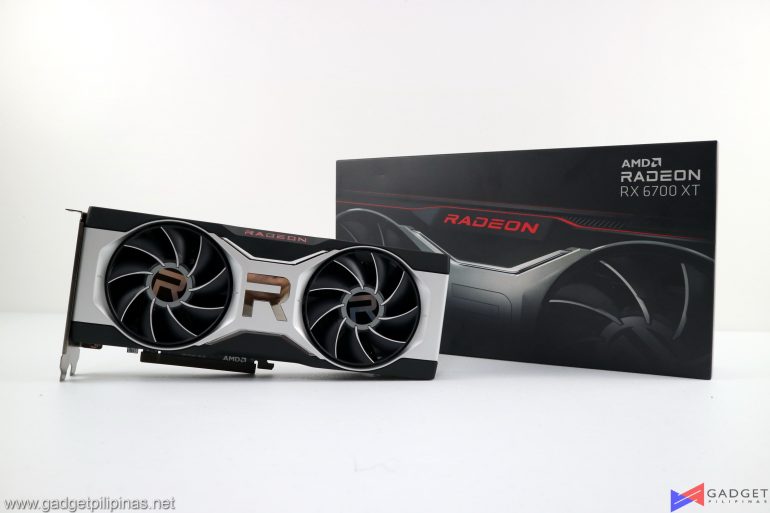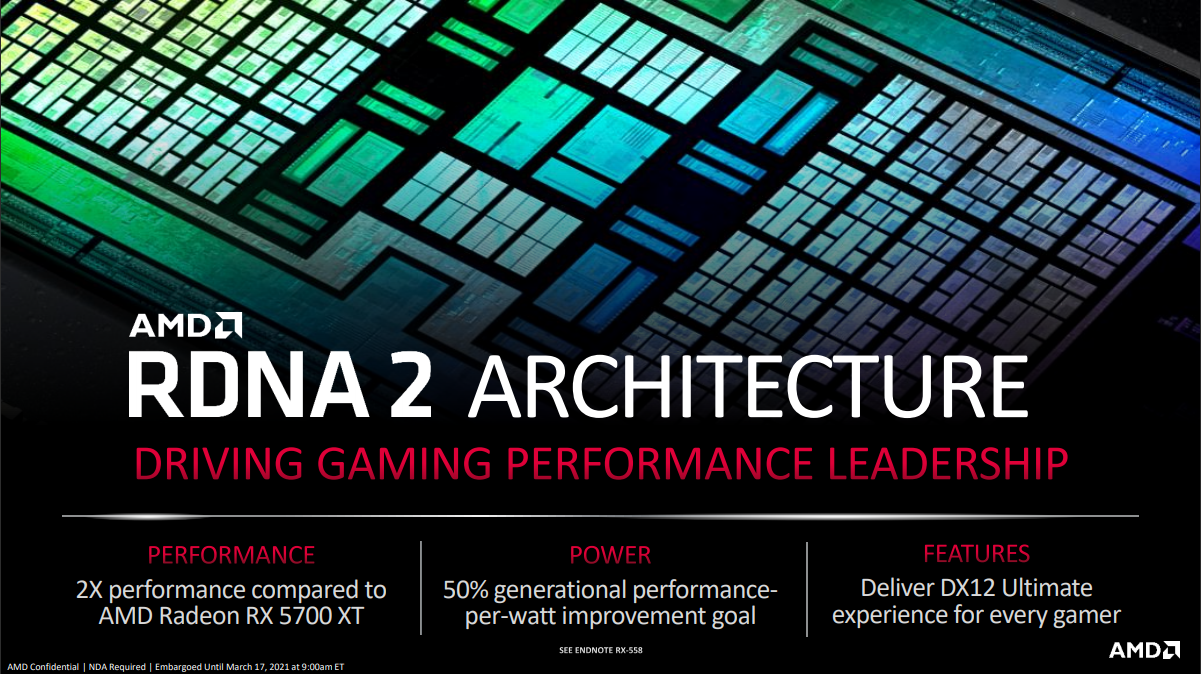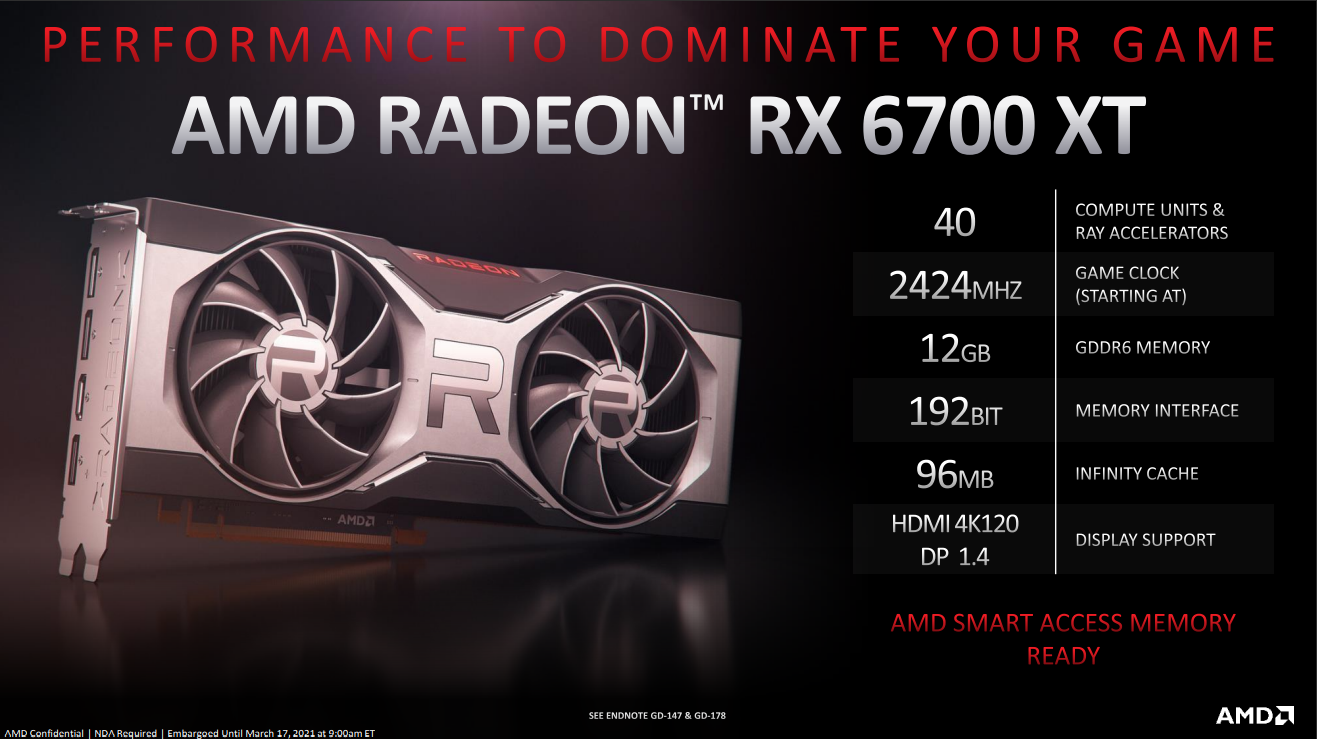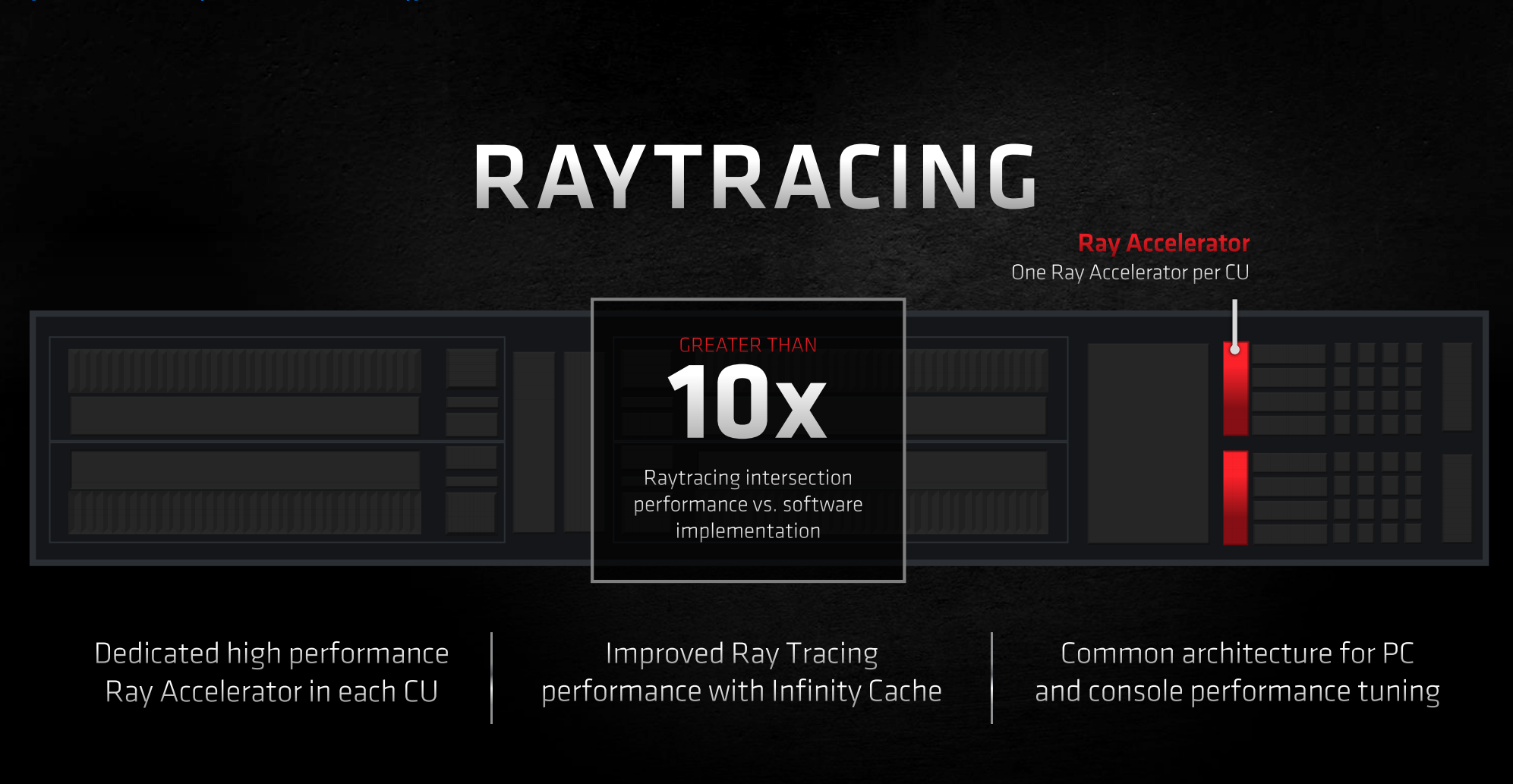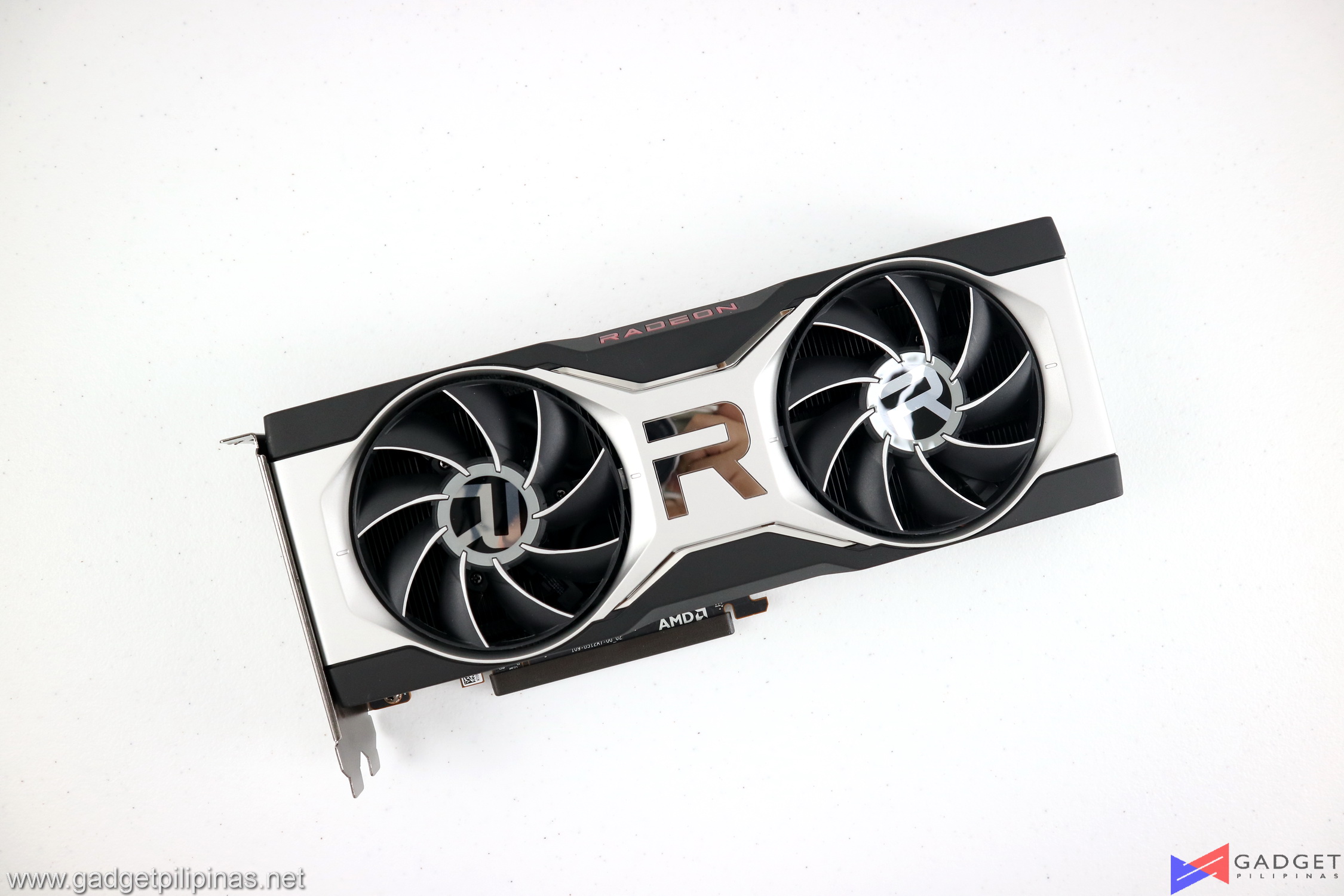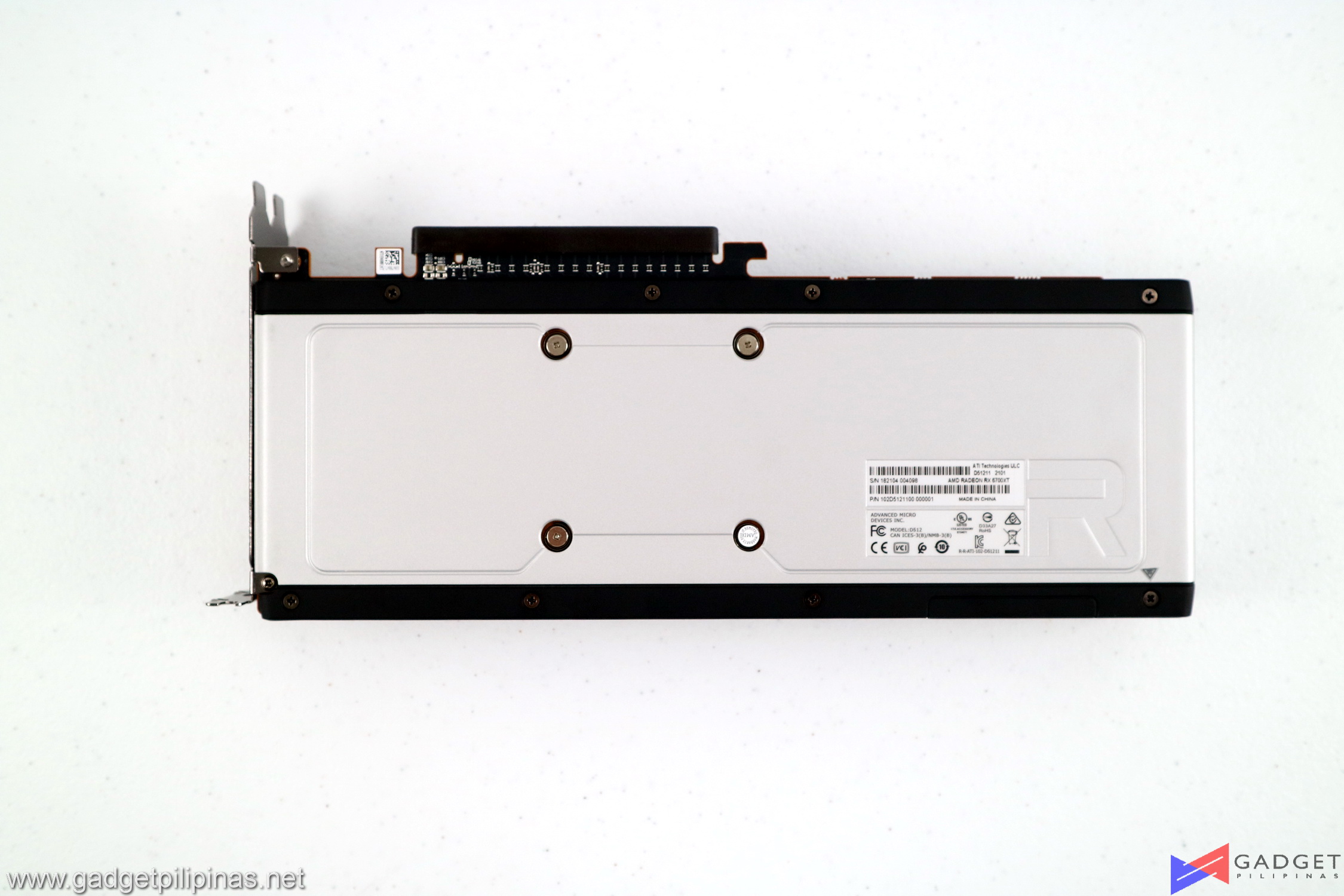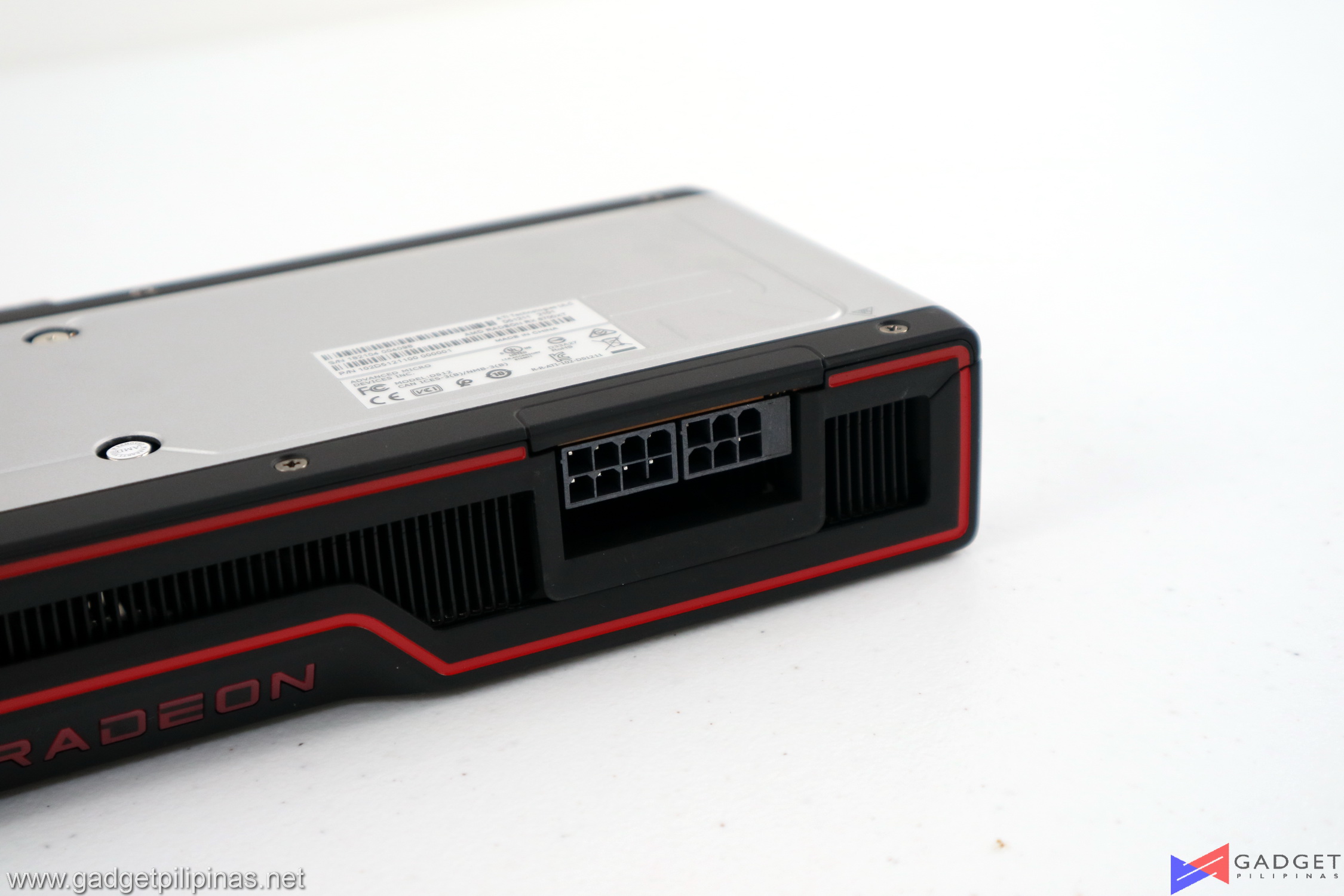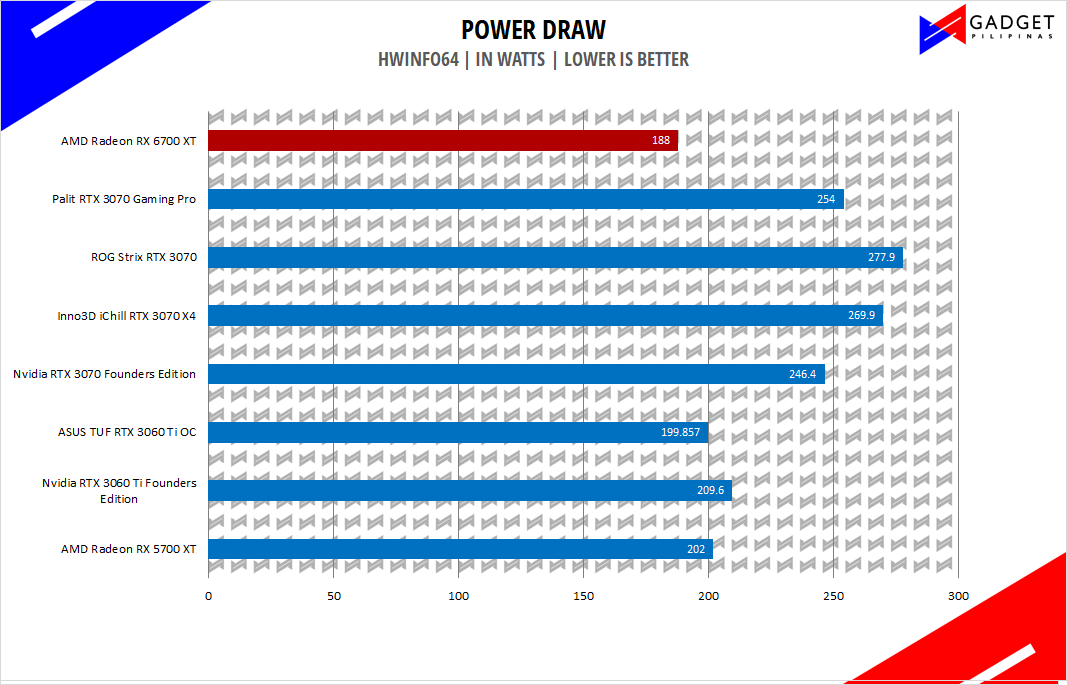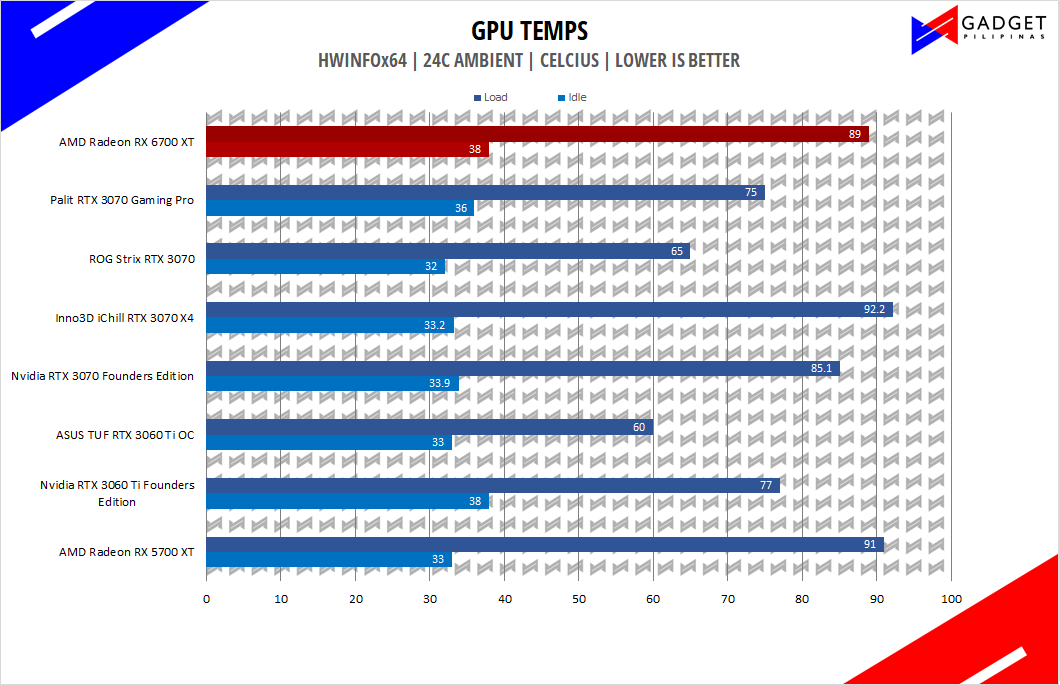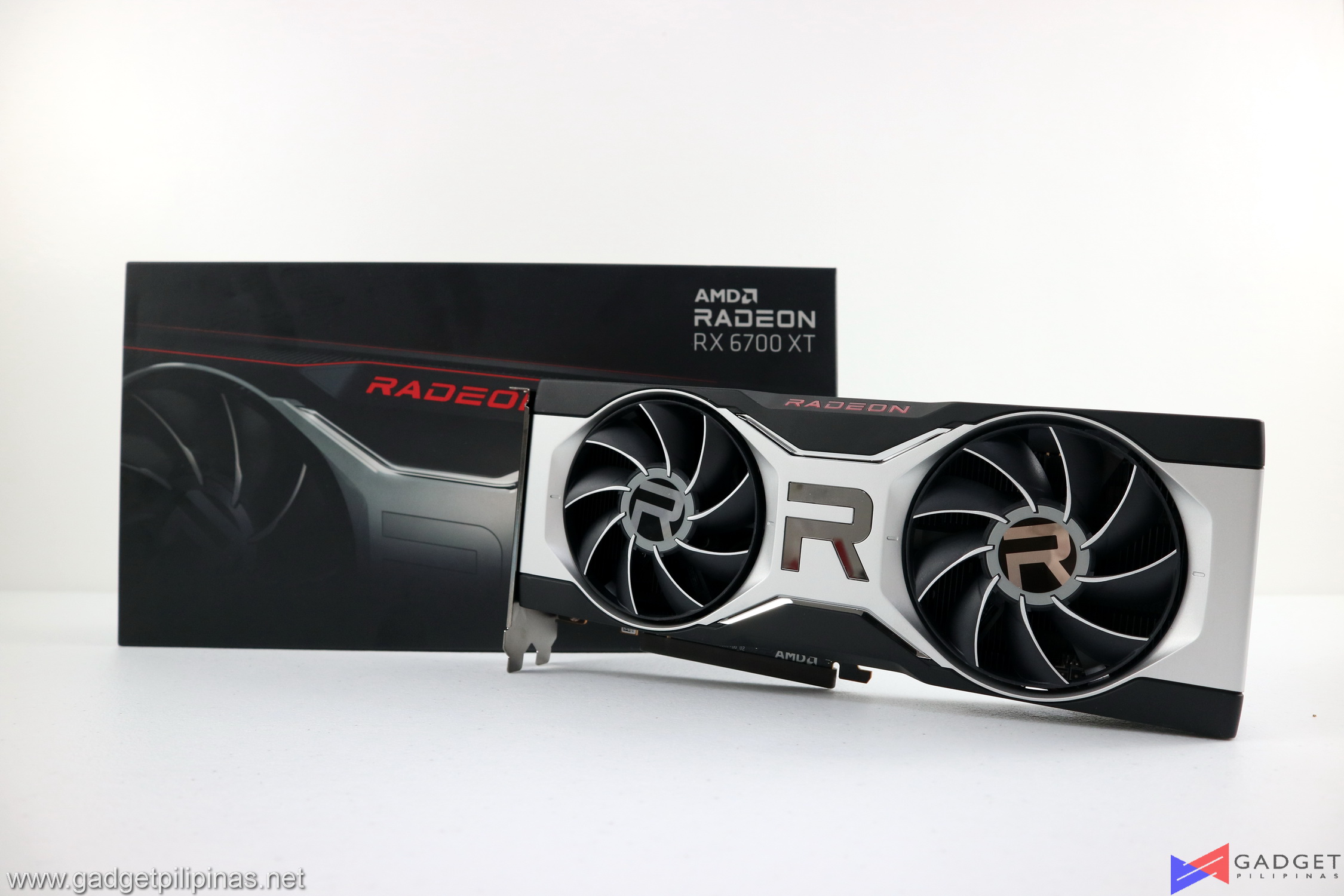Introduction
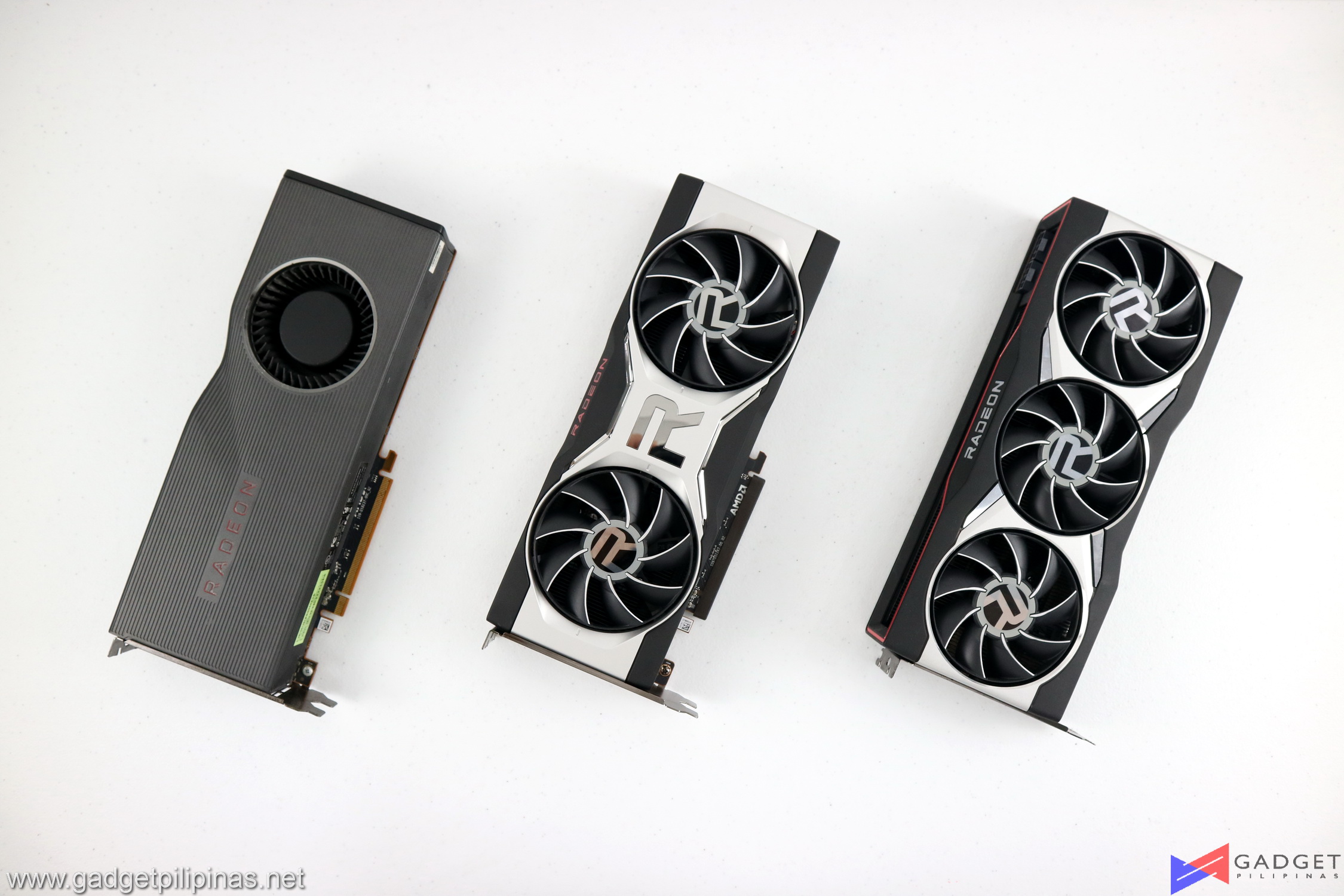 AMD previously only had the Radeon RX 5700 XT as its highest tier GPU which barely rivaled the Nvidia RTX 2060 and RTX 2070 GPU at the time. Both the RX 6800 XT and RX 6900 XT were AMD’s re-entry to the flagship GPU space but like the RTX 3080 and RTX 3090, their prices were out of reach for most consumers. Enter the AMD Radeon RX 6700 XT, a sub-$500 graphics card that offers twice the performance of the RX 5700XT while delivering a 50% performance per watt efficiency and Ray Tracing. The successor to the RX 5700 XT is up for some serious competition against the RTX 3070 and RTX 3060 Ti for the 1440p gaming crown title. Let’s take a closer look and see if the RX 6700 XT is able to do it with a price tag of $479.
AMD previously only had the Radeon RX 5700 XT as its highest tier GPU which barely rivaled the Nvidia RTX 2060 and RTX 2070 GPU at the time. Both the RX 6800 XT and RX 6900 XT were AMD’s re-entry to the flagship GPU space but like the RTX 3080 and RTX 3090, their prices were out of reach for most consumers. Enter the AMD Radeon RX 6700 XT, a sub-$500 graphics card that offers twice the performance of the RX 5700XT while delivering a 50% performance per watt efficiency and Ray Tracing. The successor to the RX 5700 XT is up for some serious competition against the RTX 3070 and RTX 3060 Ti for the 1440p gaming crown title. Let’s take a closer look and see if the RX 6700 XT is able to do it with a price tag of $479.
RDNA 2 Architecture
The RDNA 2 Architecture, or commonly known as Big Navi, is the generational evolution of the RDNA Architecture found on the RX 5000 series. While both are under TSMC’s 7nm process, the architectural improvements on RDNA 2 allow AMD’s RX 6000 series to be DX12 Ultimate certified as well as Ray Tracing capabilities.
Enter the RX 6700 XT, a sub-$500 graphics card that offers twice the performance of the RX 5700XT while delivering a 50% performance per watt efficiency and Ray Tracing. The RX 6700 XT
AMD Radeon RX 6000 Series
Specs-wise, the RX 6700 XT is an RX 6900 XT GPU that has half the compute units and stream processors.
| AMD Radeon | Price | Nvidia GeForce | Price |
| AMD Radeon RX 6900 XT | $999 | Nvidia Geforce RTX 3090 | $1499 |
| AMD Radeon RX 6800 XT | $649 | Nvidia Geforce RTX 3080 | $699 |
| AMD Radeon RX 6800 | $579 | Nvidia Geforce RTX 3070 | $499 |
| AMD Radeon RX 6700 XT | $479 | Nvidia Geforce RTX 3060 Ti | $399 |
RDNA 2 Architecture Deep Dive – Infinity Cache, Ray Accelerators, VRR
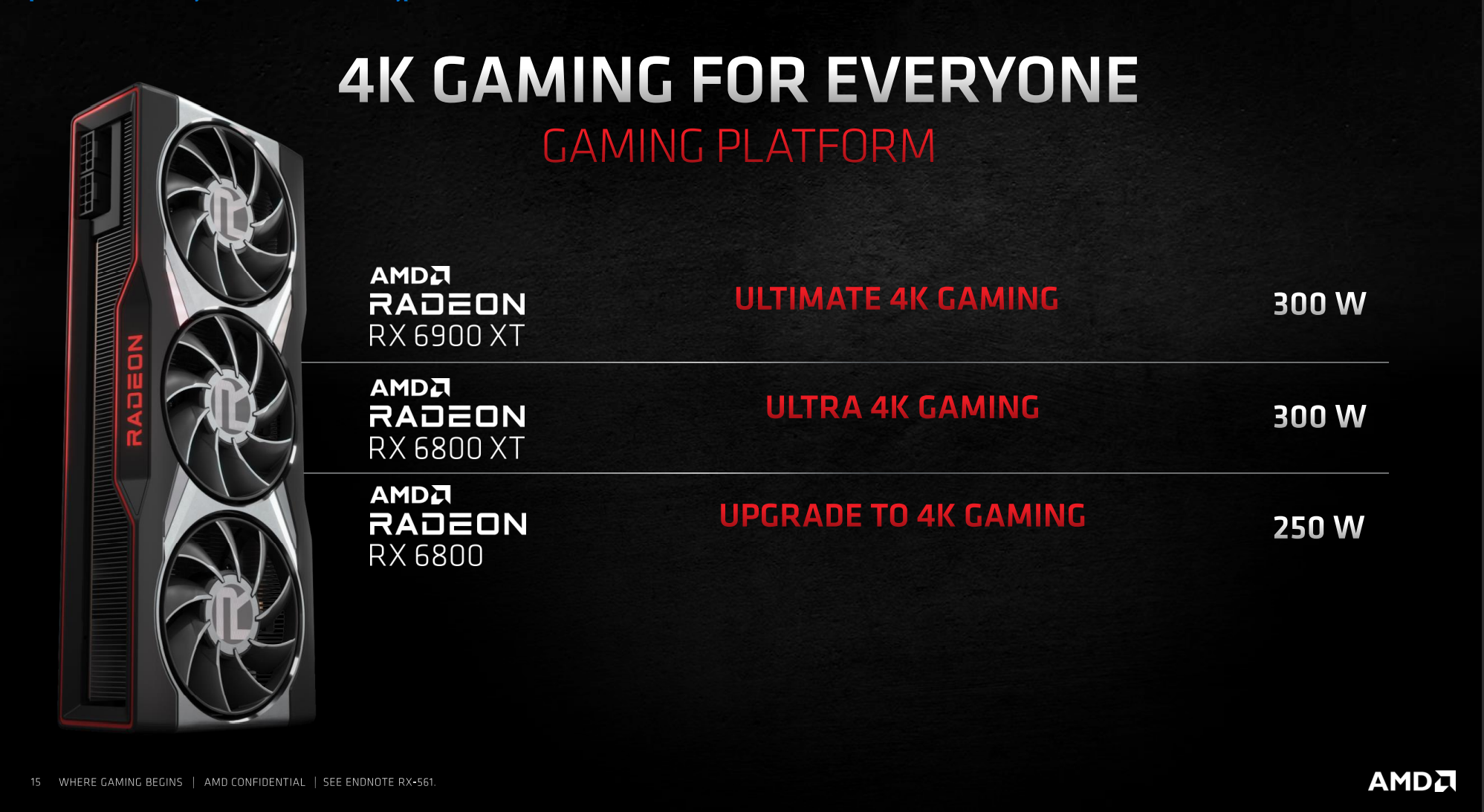 AMD is known to push for 4K gaming with its previous “high-end” graphics card releases with some units packing in liquid cooling solutions out of the box. Today, it seems like AMD has finally achieved glorious 4k gaming via the RDNA 2 Architecture without the caveats as even the cheapest RX 6000 GPU is marketed for 4K Gaming.
AMD is known to push for 4K gaming with its previous “high-end” graphics card releases with some units packing in liquid cooling solutions out of the box. Today, it seems like AMD has finally achieved glorious 4k gaming via the RDNA 2 Architecture without the caveats as even the cheapest RX 6000 GPU is marketed for 4K Gaming.
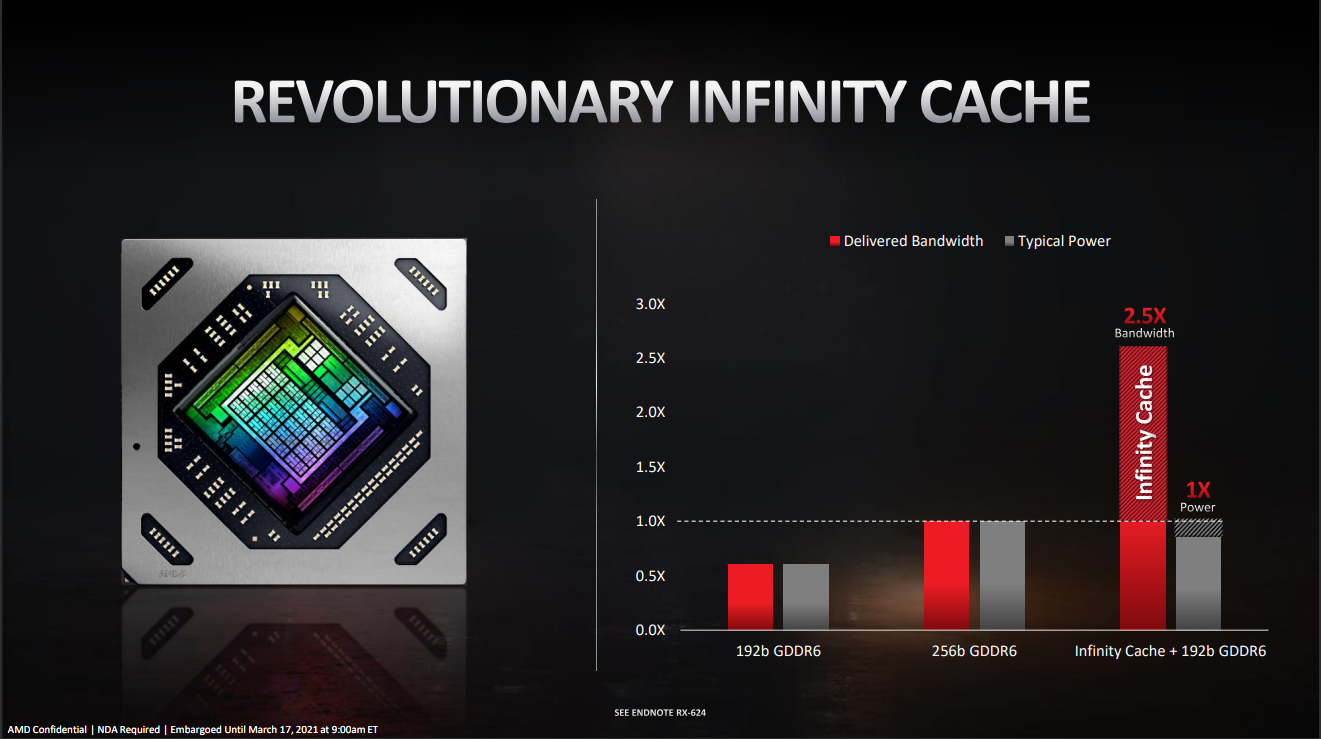 AMD’s main goal with the RDNA 2 architecture is to make it very power efficient which led to the debut of AMD’s Infinity Cache solution. Infinity Cache is a new method on how data is delivered in GPUs. Every card in the Radeon RX 6000 family is equipped with a 128MB of AMD Infinity Cache, with the exception of the RX 6700 XT as it only has 96 megabytes. AMD’s Infinity Cache implementation enables high-performance bandwidth versus GDDR6 all while consuming far less power.
AMD’s main goal with the RDNA 2 architecture is to make it very power efficient which led to the debut of AMD’s Infinity Cache solution. Infinity Cache is a new method on how data is delivered in GPUs. Every card in the Radeon RX 6000 family is equipped with a 128MB of AMD Infinity Cache, with the exception of the RX 6700 XT as it only has 96 megabytes. AMD’s Infinity Cache implementation enables high-performance bandwidth versus GDDR6 all while consuming far less power.
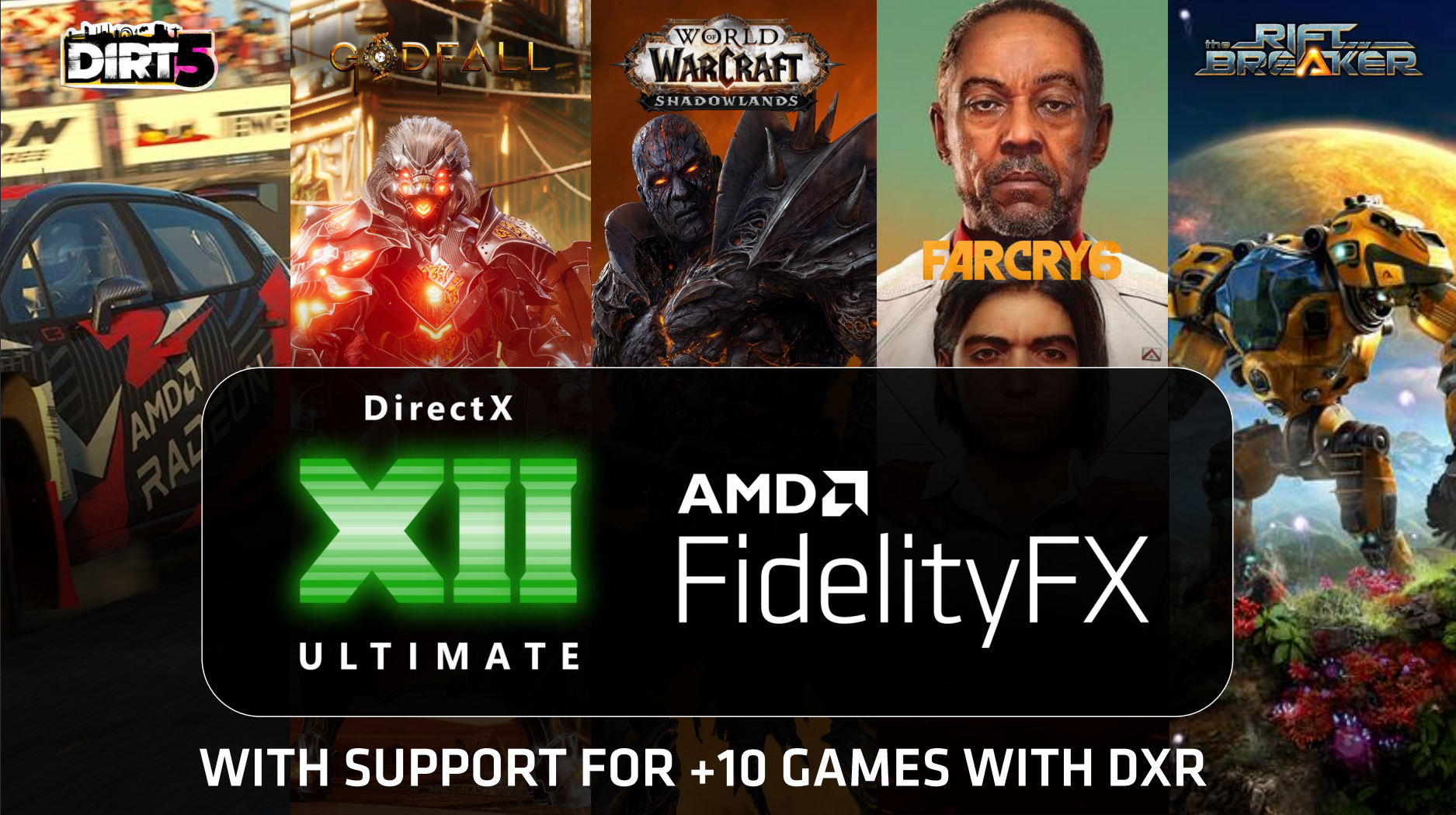 Nvidia was first to market with full DirectX 12 support, now known as DX 12 ultimate. AMD’s RDNA 2 architectural improvements allow the brand to catch up and finally support the full level API as well as Ray Tracing, variable-rate shading, mesh shaders, and sampler feedback.
Nvidia was first to market with full DirectX 12 support, now known as DX 12 ultimate. AMD’s RDNA 2 architectural improvements allow the brand to catch up and finally support the full level API as well as Ray Tracing, variable-rate shading, mesh shaders, and sampler feedback.
AMD’s Ray Accelerators is AMD’s answer to Nvidia’s RTX Ray Tracing via RT cores. Each RDNA 2 Compute Unit(CU) includes a dedicated Ray Accelerator that can calculate up to 4 ray/box intersections or one ray/triangle intersection every clock. We’ll see how AMD’s first take on Ray Tracing via Ray Accelerators compares against Nvidia’s RT cores.
Processors only access a fraction of GPU memory, typically around 256MB resulting in a less efficient data transfer and restricted performance AMD Smart Acess Memory or SAM enables more memory space to be mapped to the base address register(BAR) resulting in performance gains in select games, particularly those who are memory heavy. With SAM enabled, the whole PCIe bandwidth is utilized allowing AMD processors to fully access the entire GPU memory. As of writing, Smart Acess Memory can only be enabled if you meet the necessary hardware requirements as well as the latest BIOS and drivers.
Smart Access Platform Requirements
- AMD Ryzen 5000 Series Processors
- AMD Radeon RX 6000 GPUs
- AMD B550/X570 Series Motherboards
Above 4G decoding and Re-size BAR support must be enabled to enable Smart Access Memory. These settings can be enabled on the BIOS and are usually found under PCI-Subsystems. We will be skipping testing out Smart Acess Memory for our RX 6700 XT review as we saw a less than 3% improvement on our testing with the RX 6800 XT.
AMD Radeon RX 6700 XT Reference Card – A Closer Look
- AMD Radeon RX 6700 XT Review 004
- AMD Radeon RX 6700 XT Review 004
- AMD Radeon RX 6700 XT Review 005
- AMD Radeon RX 6700 XT Review 005
Like its bigger brother, the Radeon RX 6700 XT boasts a similar packaging with the RX 6800 XT. The design makes the reference card feel like a premium GPU.
Seeing a vanilla dual-fan graphics card this day and age sure feels weird as both AMD and Nvidia’s latest-gen GPUsm including their board partners, implements either a triple fan or flow-through cooler design. Frankly, I personally can’t shake off the feeling that the RX 6700XT’s reference design is made by Pokémon’s Team Rocket.
 Nitpick aside, its design is relatively close to the RX 6800 XT with the omission of the middle fan which is replaced by a rather shiny “R” Radeon logo. I personally prefer the RX 6700 XT’s vanilla dual-fan cooler compared to the RX 5700 XT’s blower-style cooler as the latter proved to be thermally challenged.
Nitpick aside, its design is relatively close to the RX 6800 XT with the omission of the middle fan which is replaced by a rather shiny “R” Radeon logo. I personally prefer the RX 6700 XT’s vanilla dual-fan cooler compared to the RX 5700 XT’s blower-style cooler as the latter proved to be thermally challenged.
Despite being a sub $500 graphics card, AMD managed to put in an elegant-looking backplate which also acts as a heatsink for the whole Radeon RX 6700 XT GPU. There’s no visible GPU-cutout, unlike the reference RX 6800 XT design.
- AMD Radeon RX 6700 XT Review 019
- AMD Radeon RX 6700 XT Review 019
- AMD Radeon RX 6700 XT Review 036
- AMD Radeon RX 6700 XT Review 036
The AMD Radeon RX 6700 XT sports the same side shroud design as the Radeon RX 6800 XT albeit in a thinner profile. It’s a 2-slot thick GPU measuring about 40mm. The reduced thickness means a smaller heatsink for cooling.
Powering the RX 6700 XT requires an 8-pin and 6-pin PCI-E cable much like the previous generation RX 5700 XT. The AMD Radeon RX 6700 XT is rated with a total board power of 230-watts. AMD recommends a PSU with a wattage of 650W for the RX 6700 XT.
AMD opted for the standard triple Display Port 1.4 and a single HDMI 2.1 port for the RX 6700 XT, unlike the RX 6800 XT which replaced one Display Port in favor of a Type-C port.
LED illumination on the Radeon logo of the AMD Radeon RX 6700 XT is much brighter and cleaner compared to the Radeon 6800 XT. The Red Radeon logo makes the LED looks much brighter as opposed to the frosted Radeon logo found on the RX 6800XT.
Benchmark Setup and Methodology
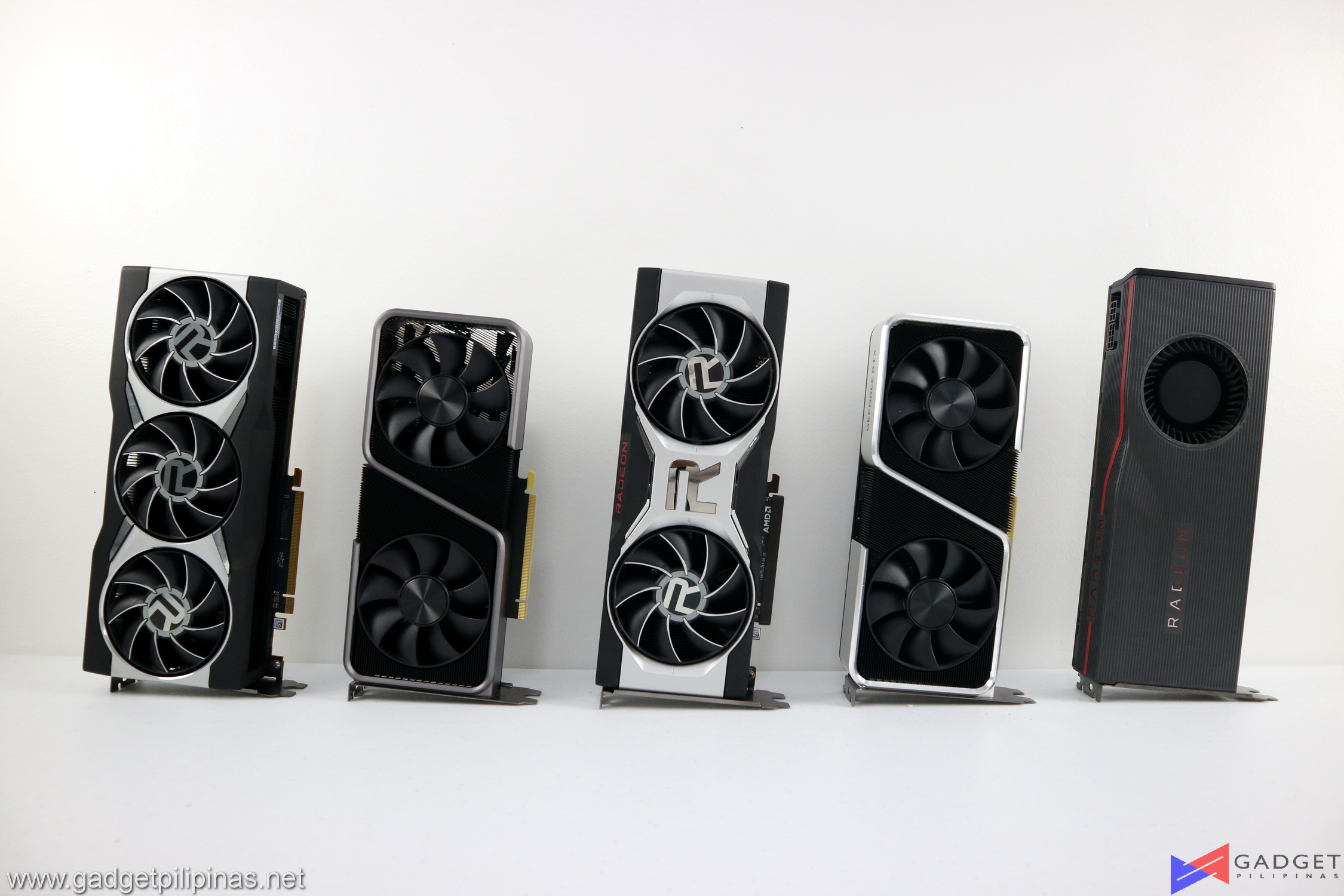 Gadget Pilipinas’ testing philosophy is to provide detail-oriented results as accurately as possible that our readers can replicate our tests given that these conditions are met. Different benchmarking apps and sequences are used depending on the component or device being tested.
Gadget Pilipinas’ testing philosophy is to provide detail-oriented results as accurately as possible that our readers can replicate our tests given that these conditions are met. Different benchmarking apps and sequences are used depending on the component or device being tested.
| AMD Radeon RX 6700 XT Review Test Bench Specs | ||||
| CPU | AMD Ryzen 9 5950X | |||
| COOLER | Corsair H100i RGB PRO XT 240mm AIO – Noctua NT-H2 Thermal Paste | |||
| MOTHERBOARD | ASUS ROG Crosshair VIII Hero (Wi-Fi) | BIOS 2502 | |||
| MEMORY | Tforce XTREEM ARGB 16GB(2x8GB) 3600Mhz DDR4 | |||
| GPU | AMD Radeon RX 6700 XT | Adrenalin 20.50 | Nvidia RTX 3070 | GeForce 460.89 | ||
| STORAGE | TForce CARDEA Liquid NVMe SSD | |||
| POWERSUPPLY | ThermalTake ToughPower 1200w Platinum | |||
| OPERATING SYSTEM | Windows 10 Pro Build 2404 | |||
| DISPLAY | Lenovo Legion Y27Q Gaming Monitor | |||
We use CapFrameX 1.5.7 Beta as our FPS capture and analysis tool for all our gaming benchmarks. The latest build version of Windows 10 and WHQL certified drivers are used for our benchmarks. Readings such as temperatures and power draw are recorded using HWMonitor and HWInfo64 as well as other relevant software are used for cross-checking.
Benchmark list
- SuperPi 32M
- wPrime
- AIDA64 Memory Benchmark
- Geekbench 5
- Cinebench R20
- Google Octane
- V-Ray
- HWBot x265
- Handbrake
- Blender
- Corona Renderer
- 3DMark
- DOTA 2
- Rainbow Six Siege
- Metro Exodus
- Far Cry 5
- Shadow of the Tomb Raider
- GTA V
- F1 2020
- Cyberpunk 2077
- Assassins Creed: Odyssey
- Horizon Zero Dawn
- Godfall
AMD Radeon RX 6700XT Synthetic Benchmarks
3DMARK
- AMD Radeon RX 6700 XT Review 3DMark Firestrike Benchmark
- AMD Radeon RX 6700 XT Review 3DMark Firestrike Benchmark
- AMD Radeon RX 6700 XT Review 3DMark Timespy Benchmark
- AMD Radeon RX 6700 XT Review 3DMark Timespy Benchmark
3DMark is the go-to benchmark for gamers because of the ability to share and compare results online. We tested the AMD RX 6700 XT both in Fire Strike and Time Spy to get a good gauge of DX 11 and DX 12 API performance.
GeekBench 5
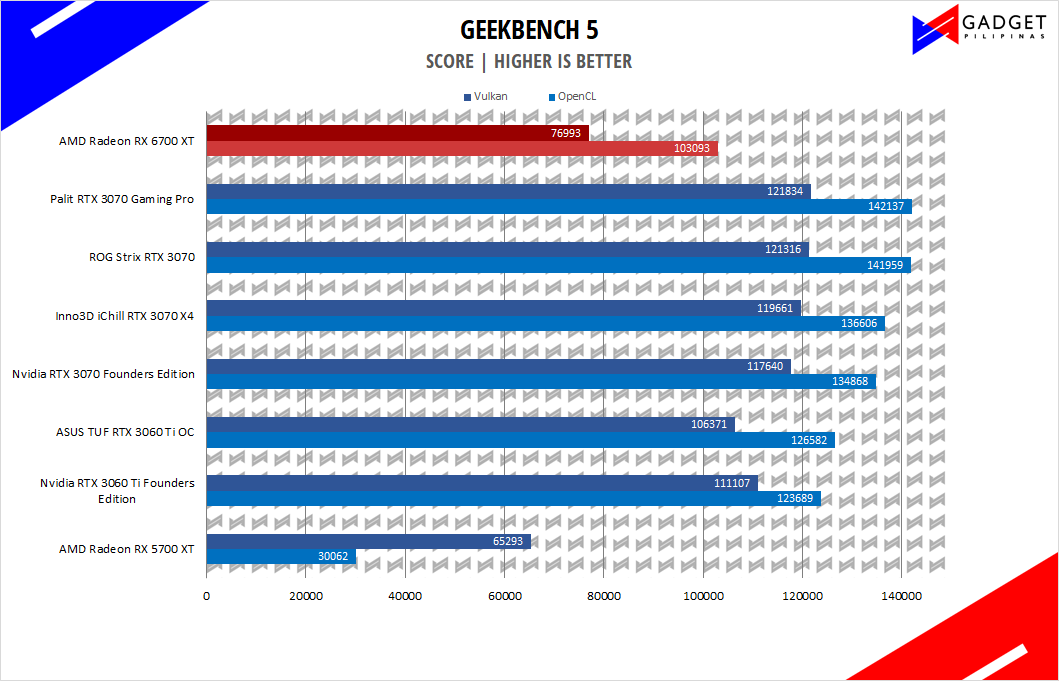 Geekbench is a multi-platform benchmark that’s used to gauge CPU performance and compare them across Windows, Mac, and Mobile. Geekbench 5 is the latest version and doesn’t rely on memory as much compared to the previous Geekbench 4, making it a great tool to measure both single-core and multi-core CPU performance. For our GPU reviews, we both measure OpenCL and Vulkan performance
Geekbench is a multi-platform benchmark that’s used to gauge CPU performance and compare them across Windows, Mac, and Mobile. Geekbench 5 is the latest version and doesn’t rely on memory as much compared to the previous Geekbench 4, making it a great tool to measure both single-core and multi-core CPU performance. For our GPU reviews, we both measure OpenCL and Vulkan performance
AMD Radeon RX 6700XT Gaming Benchmarks
DOTA 2
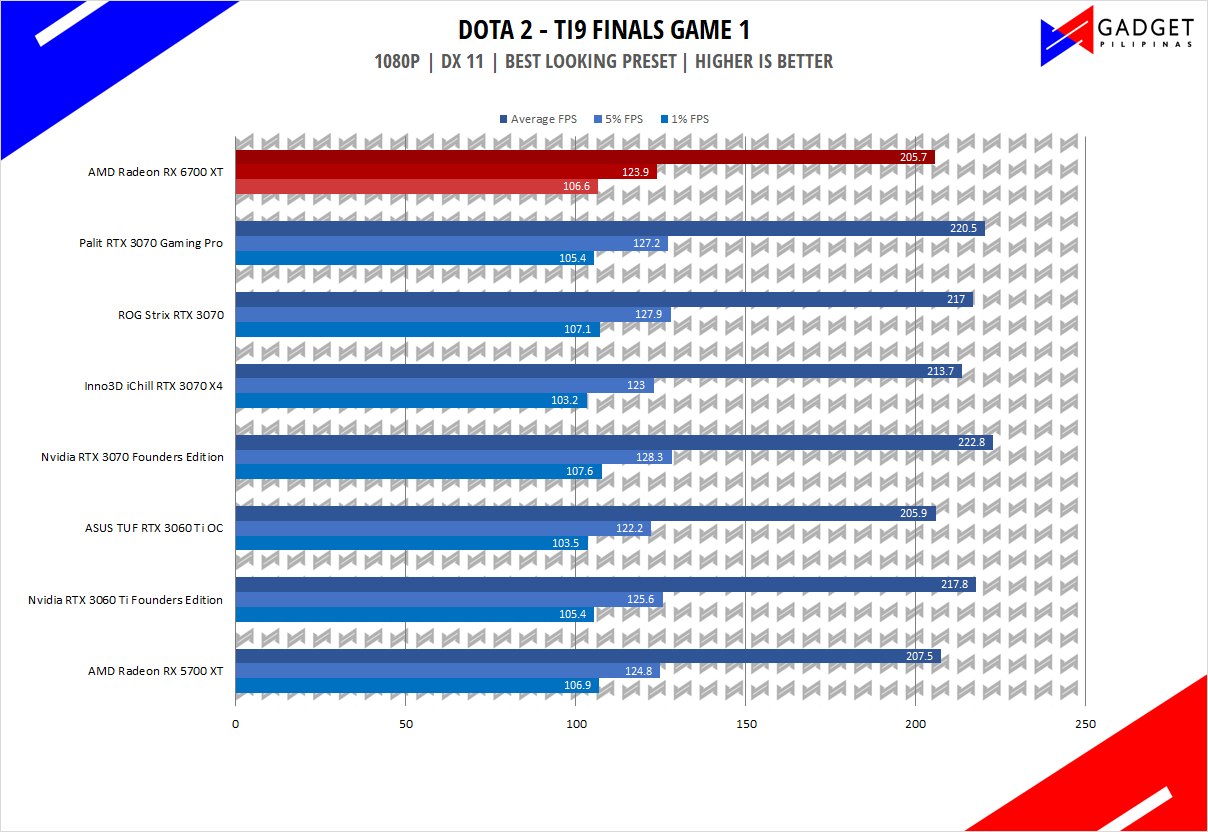

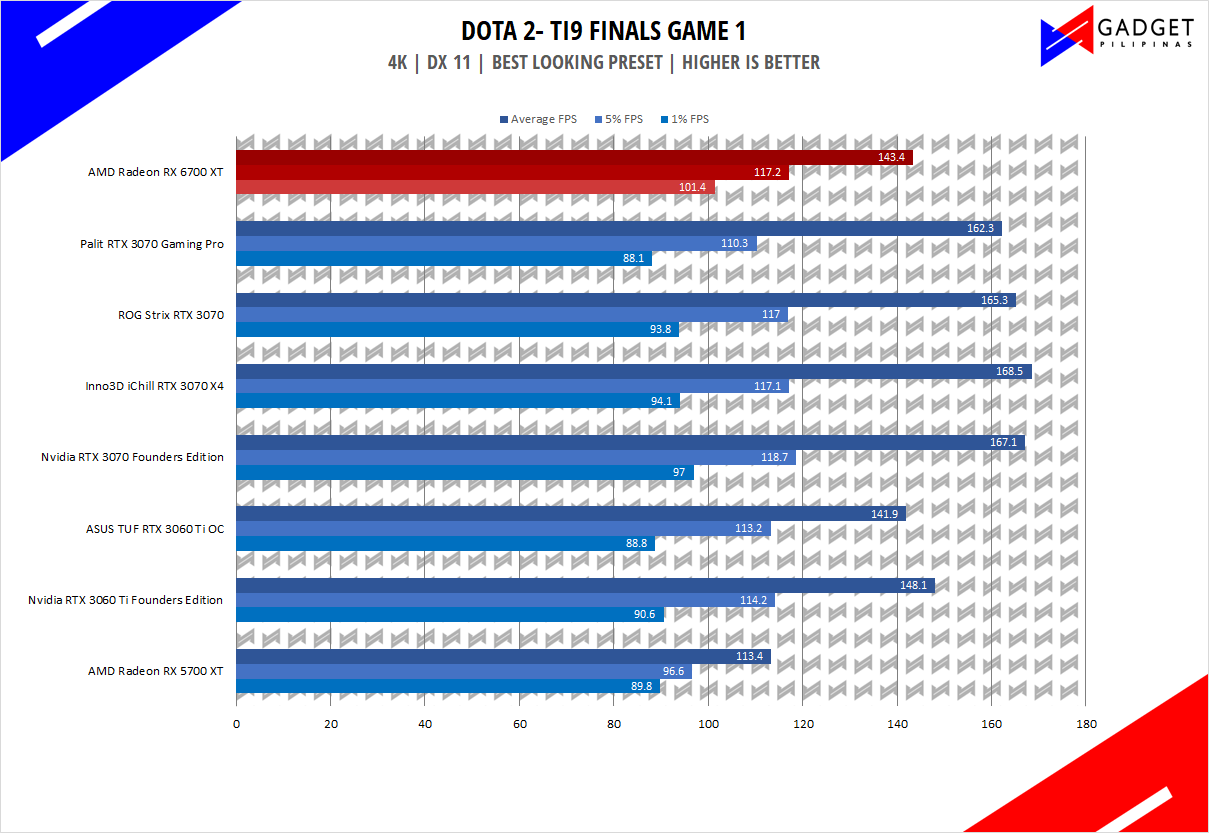 Most gamers play at least one of the following free-to-play titles: League of Legends, CS: GO, Dota 2, and/or Fortnite. Dota 2 is a good representation of the F2P titles as it is the most demanding game in the spectrum. The benchmark will give you an idea of the graphic card’s relative performance on other lesser demanding titles. Our benchmark sequence is based on a replay of OG vs. Liquid in the TI9 grand finals from the team fight that happened on 28:30 to 29:30.
Most gamers play at least one of the following free-to-play titles: League of Legends, CS: GO, Dota 2, and/or Fortnite. Dota 2 is a good representation of the F2P titles as it is the most demanding game in the spectrum. The benchmark will give you an idea of the graphic card’s relative performance on other lesser demanding titles. Our benchmark sequence is based on a replay of OG vs. Liquid in the TI9 grand finals from the team fight that happened on 28:30 to 29:30.
Far Cry 5
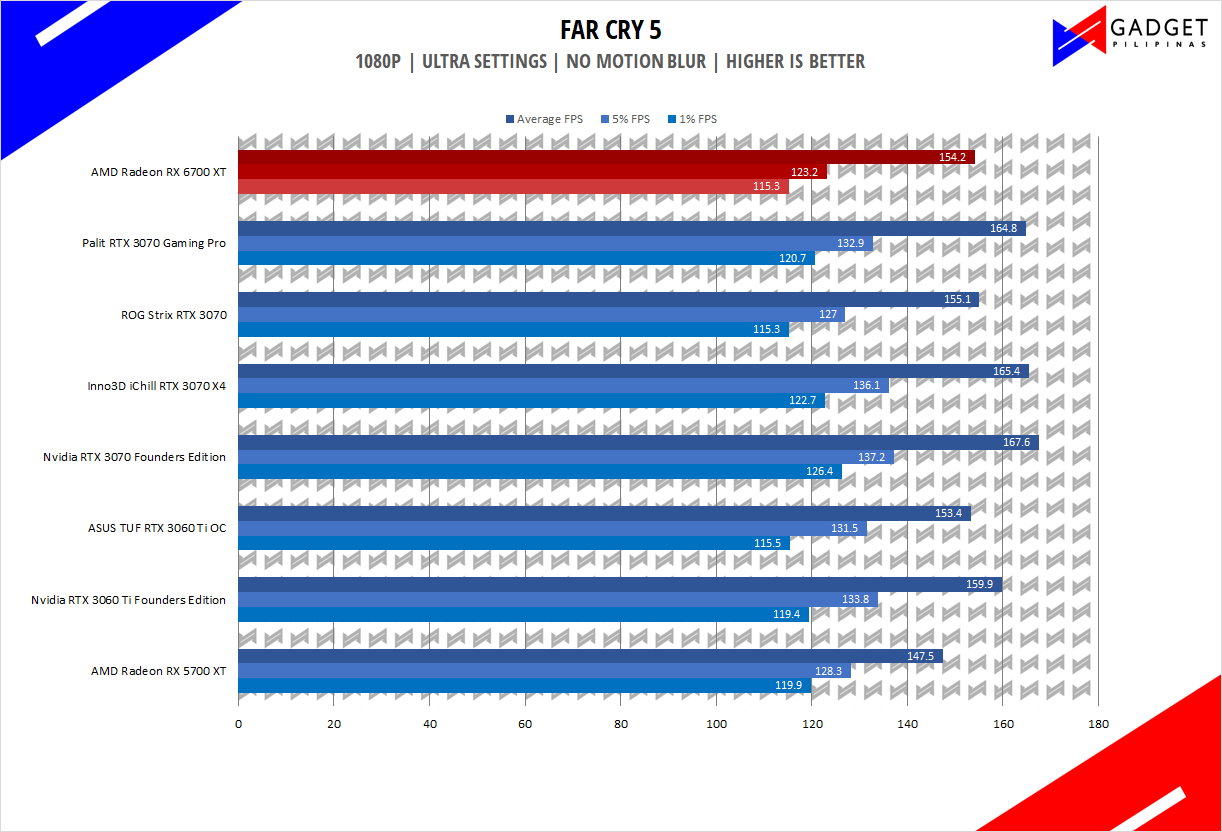
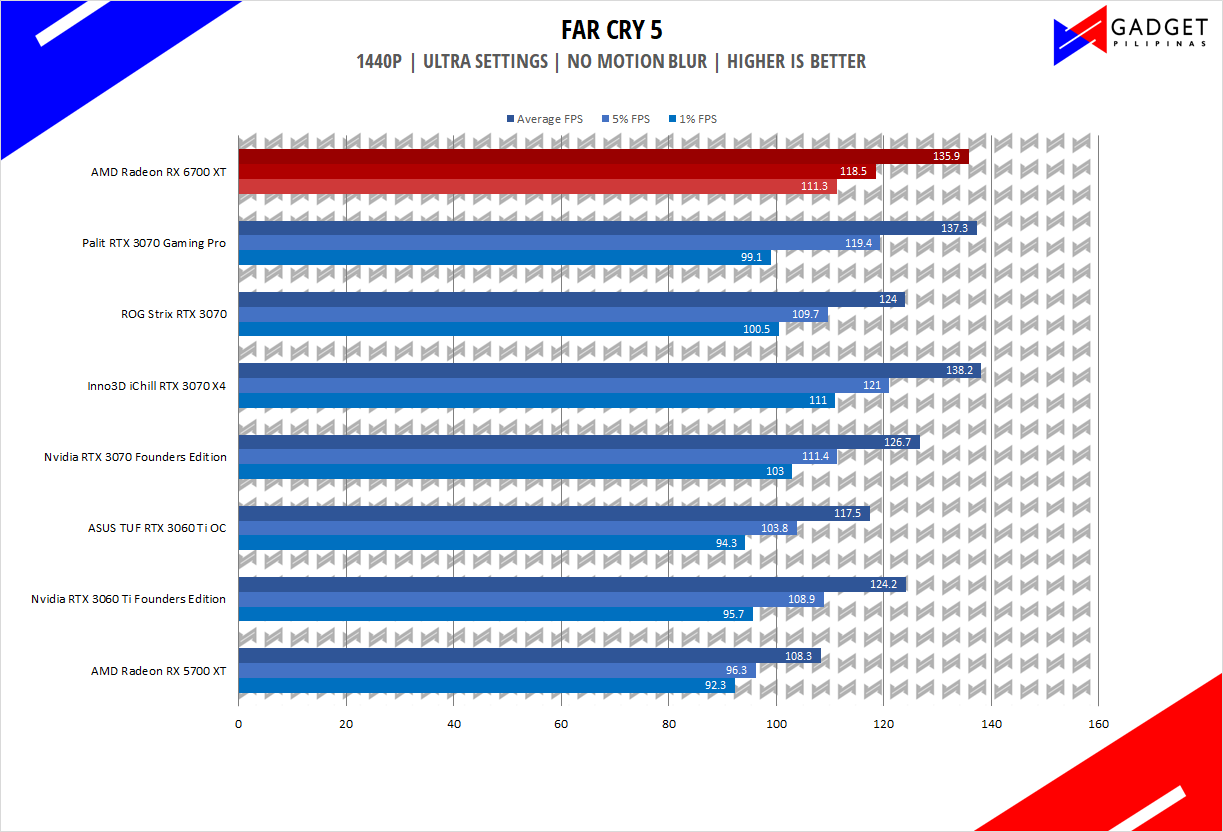
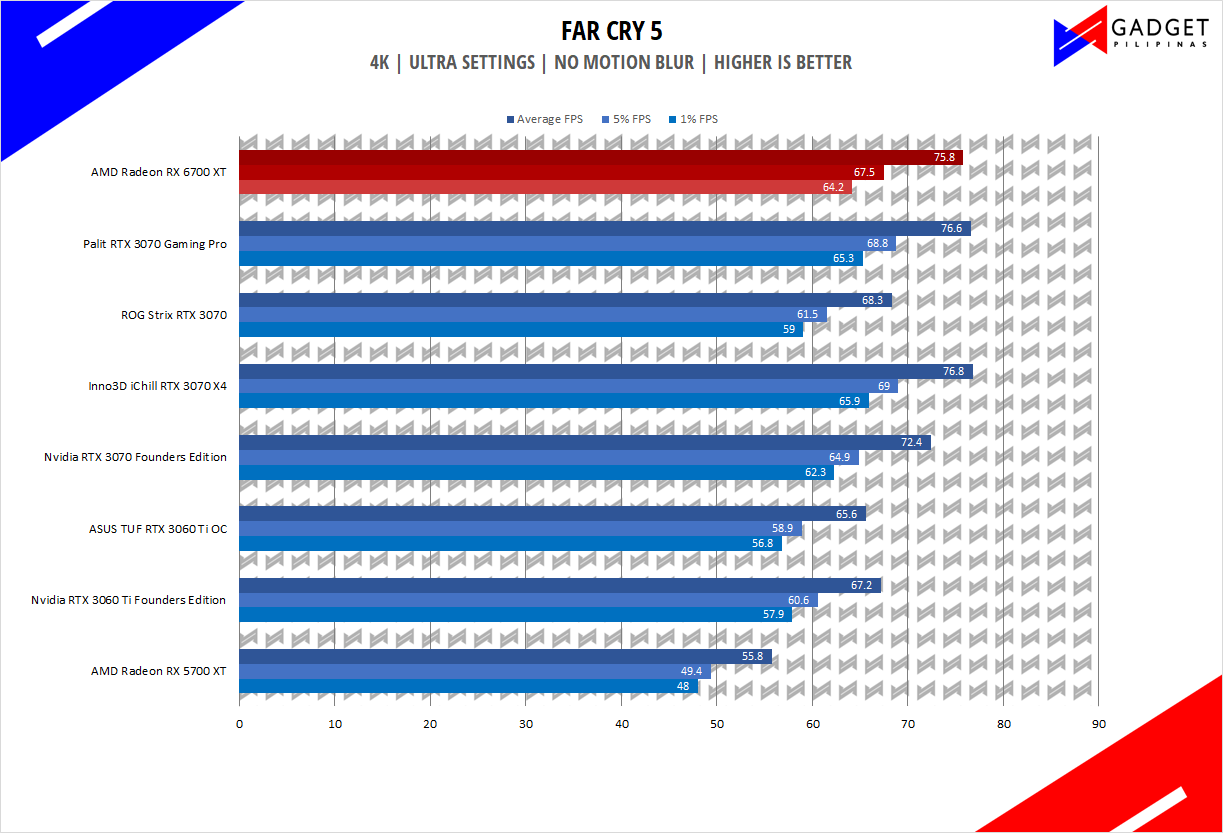 FarCry 5 is an FPS game published by Ubisoft and uses the Dunia engine. It heavily relies on and takes advantage of DirectX 11 to render a realistic environment that makes it taxing to both the CPU and GPU.
FarCry 5 is an FPS game published by Ubisoft and uses the Dunia engine. It heavily relies on and takes advantage of DirectX 11 to render a realistic environment that makes it taxing to both the CPU and GPU.
Rainbow Six Siege
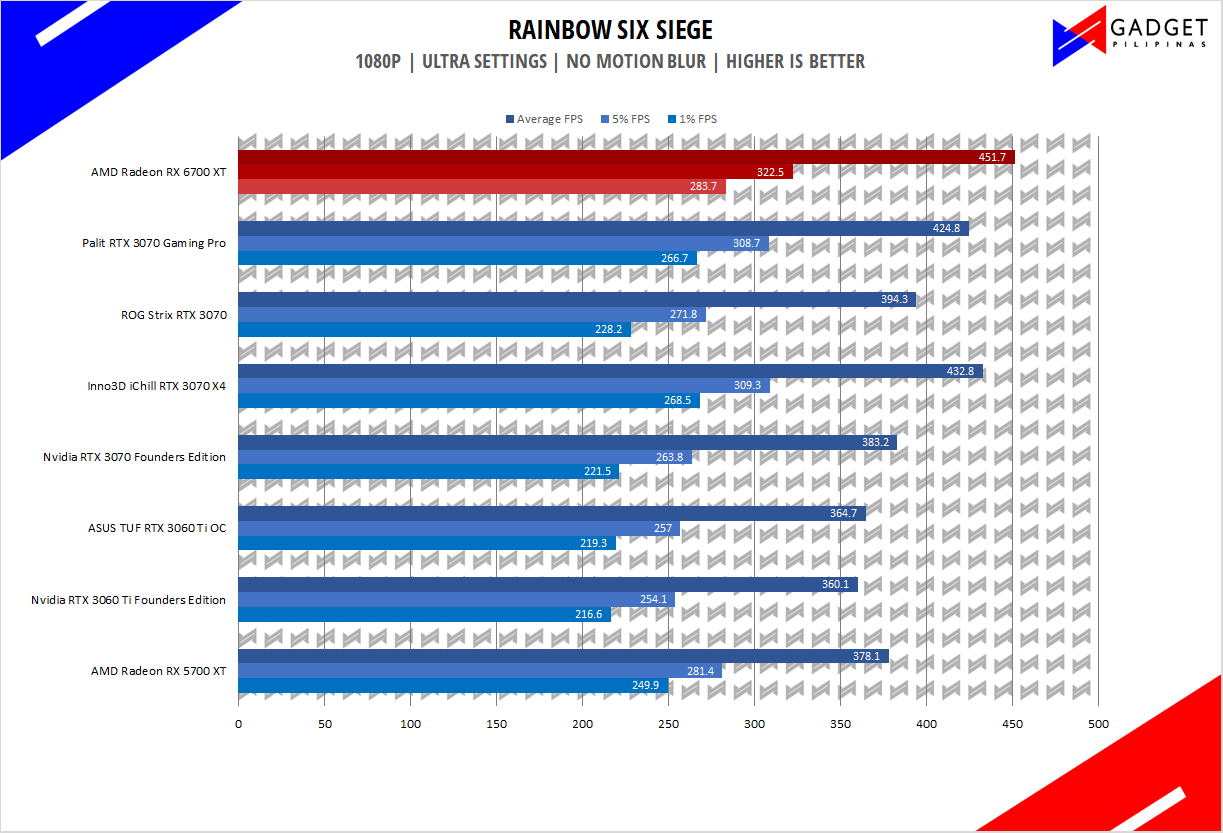
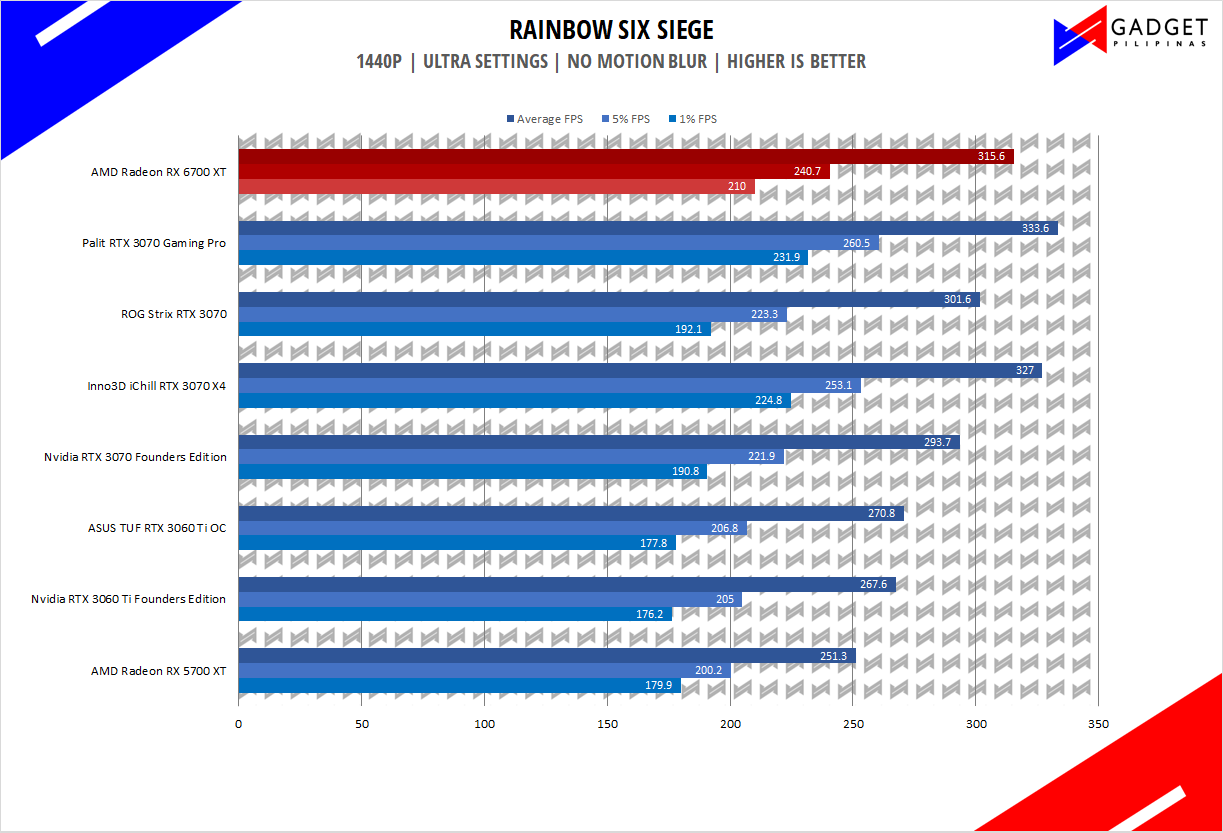
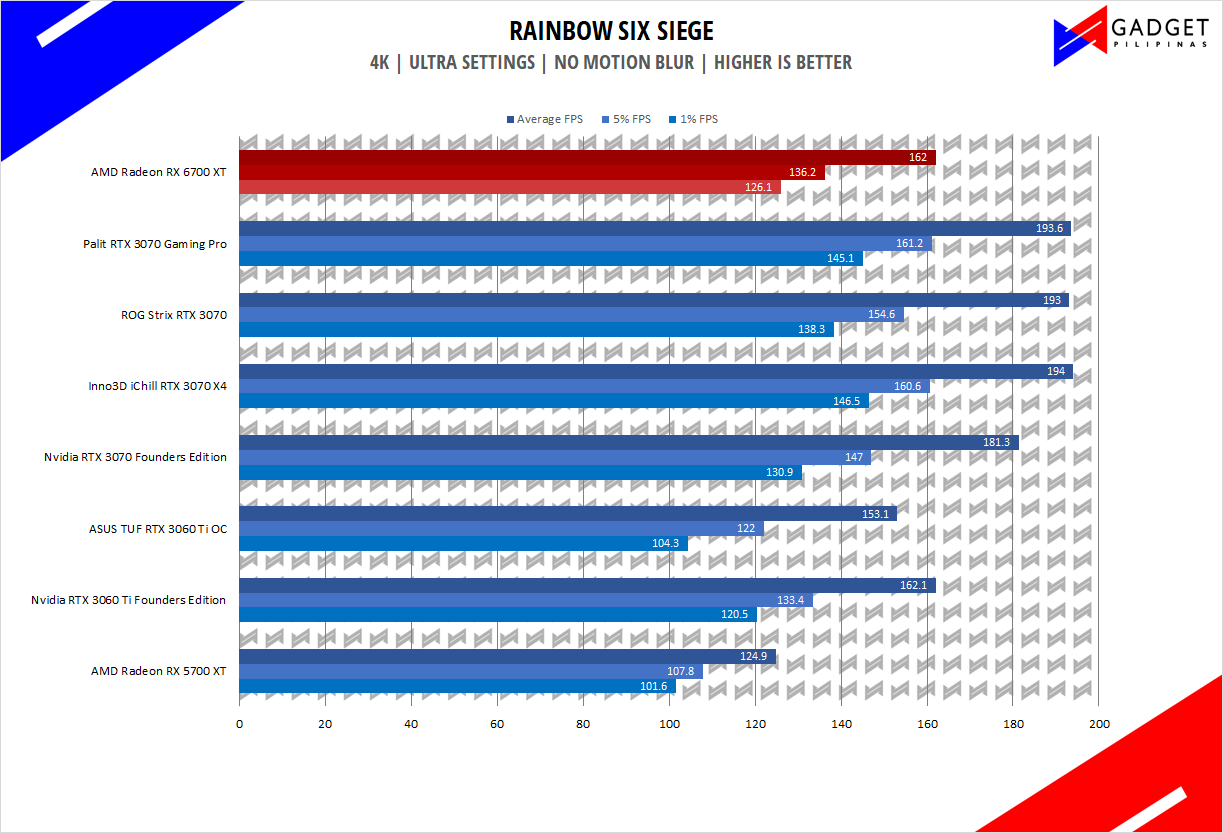 Rainbow Six Seige is one of the few popular AAA games that’s still popular in 2021 due to its competitive gameplay mechanics. R6S uses the AnvilNext game engine, which is developed by the game’s publisher, Ubisoft. As of writing, Rainbow Six Siege is currently the most popular Tom Clancy title beating out Wildlands, Breakpoint and even, Division 2. Rainbow Six Seige is one of the few popular AAA games that’s still popular in 2019 due to its competitive gameplay mechanics. R6S uses the AnvilNext game engine, which is developed by the game’s publisher, Ubisoft. As of writing, Rainbow Six Siege is currently the most popular Tom Clancy title beating out Wildlands, Breakpoint and even, Division 2.
Rainbow Six Seige is one of the few popular AAA games that’s still popular in 2021 due to its competitive gameplay mechanics. R6S uses the AnvilNext game engine, which is developed by the game’s publisher, Ubisoft. As of writing, Rainbow Six Siege is currently the most popular Tom Clancy title beating out Wildlands, Breakpoint and even, Division 2. Rainbow Six Seige is one of the few popular AAA games that’s still popular in 2019 due to its competitive gameplay mechanics. R6S uses the AnvilNext game engine, which is developed by the game’s publisher, Ubisoft. As of writing, Rainbow Six Siege is currently the most popular Tom Clancy title beating out Wildlands, Breakpoint and even, Division 2.
Cyberpunk 2077
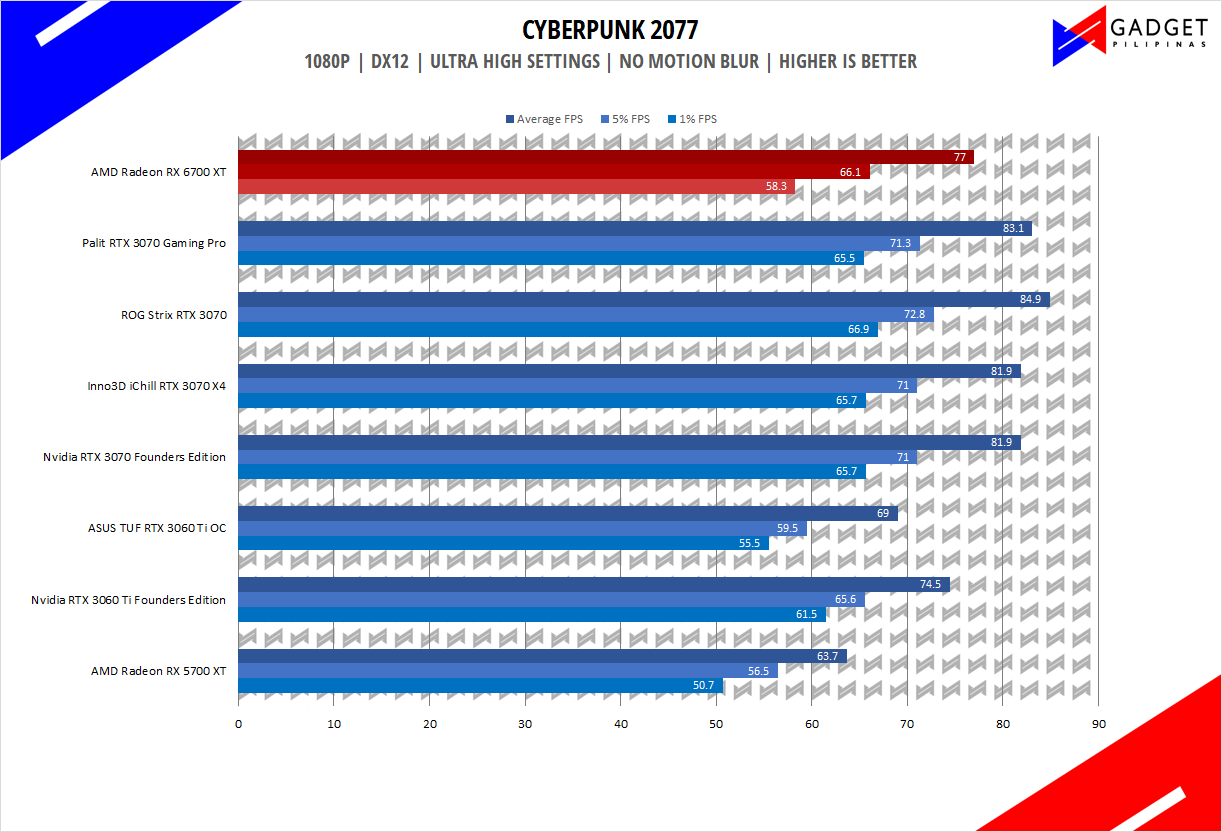
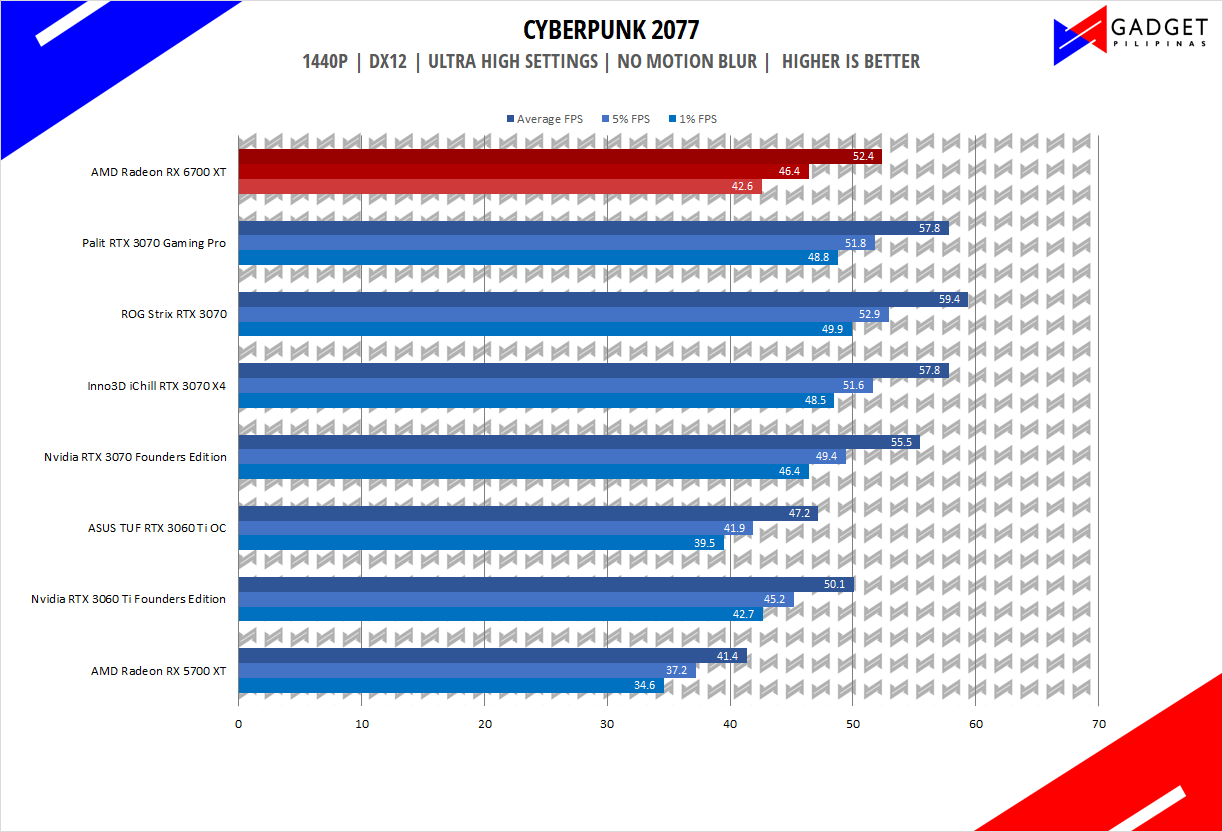
 Cyberpunk 2077 is arguably the most hyped game of 2020. Developed by CD Projekt Red, the dystopian open-world, action-adventure RPG sports is one of the most demanding titles to date. Cyberpunk 2077 also supports three Ray Tracing settings as well as DLSS which makes the game a great tool to measure Ray tracing performance for both AMD and Nvidia graphics cards.
Cyberpunk 2077 is arguably the most hyped game of 2020. Developed by CD Projekt Red, the dystopian open-world, action-adventure RPG sports is one of the most demanding titles to date. Cyberpunk 2077 also supports three Ray Tracing settings as well as DLSS which makes the game a great tool to measure Ray tracing performance for both AMD and Nvidia graphics cards.
Shadow of The Tomb Raider
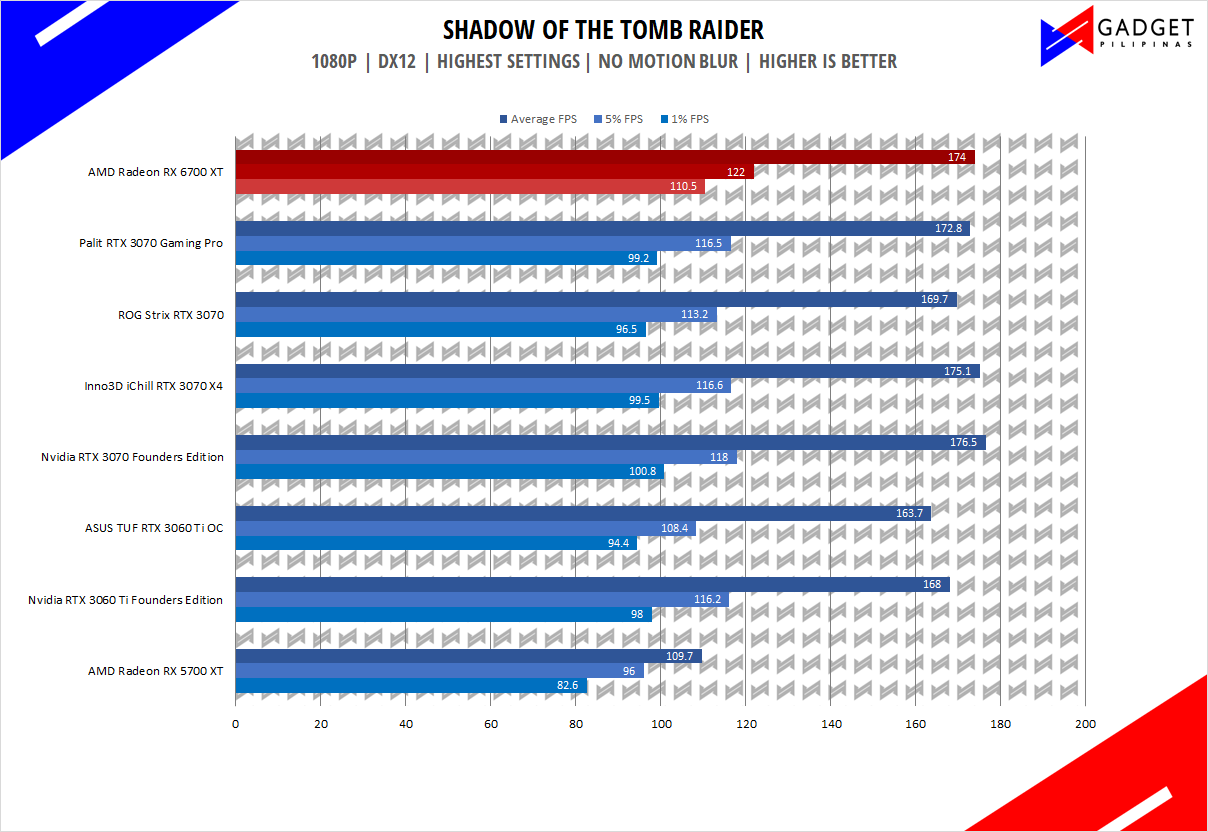
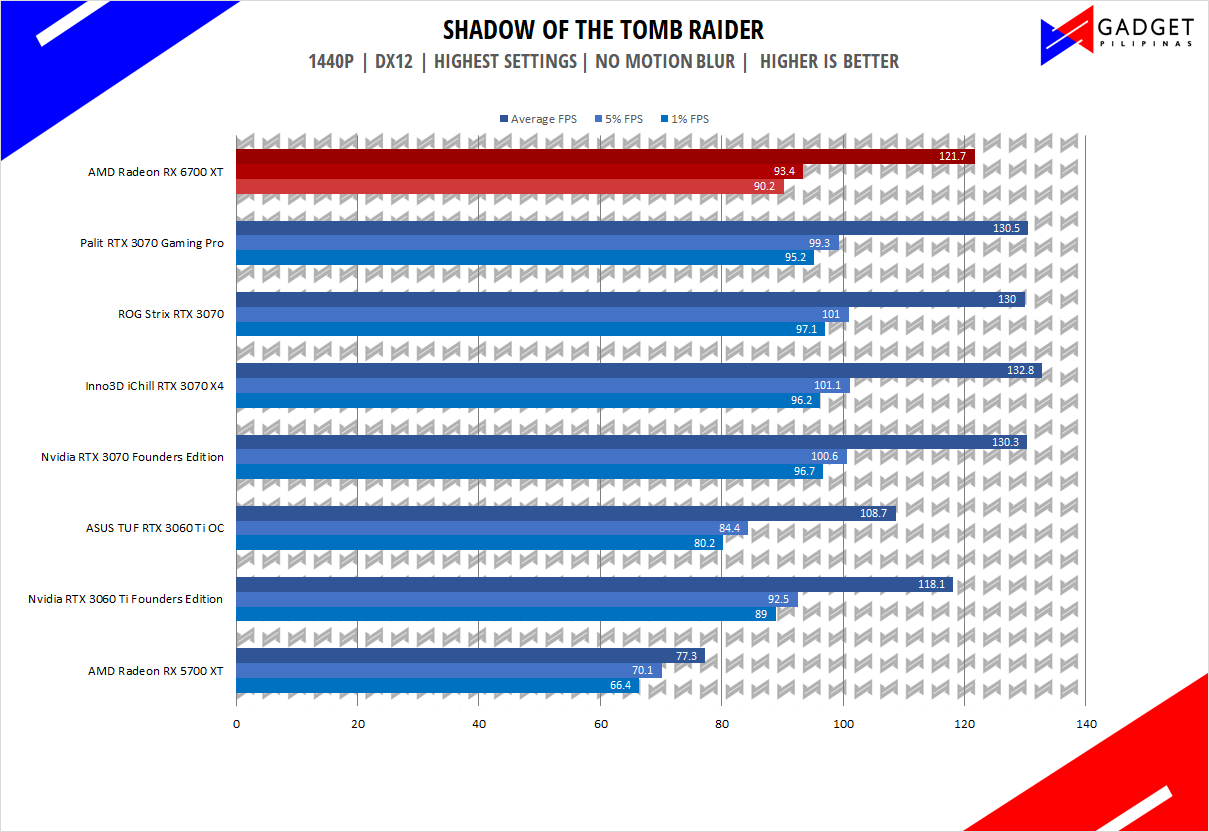
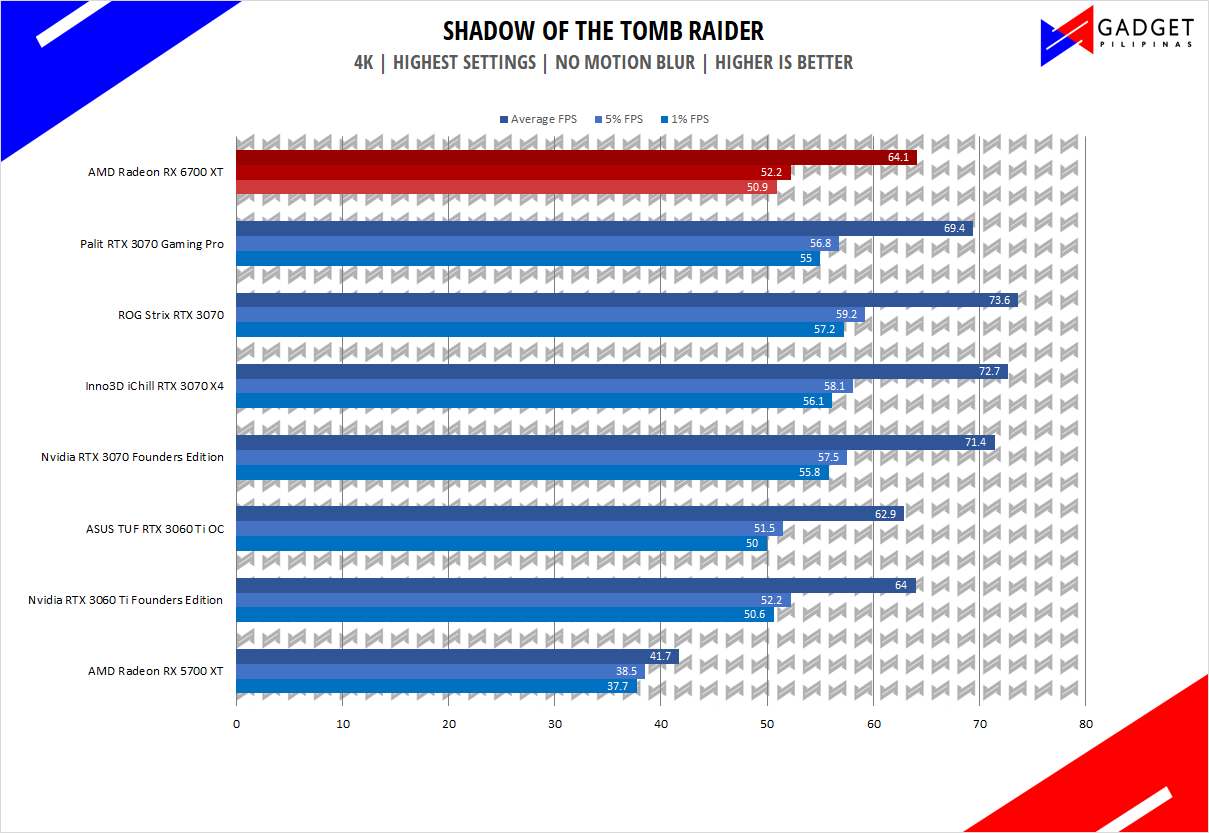 Shadow of The Tomb Raider or SOTR is the latest installment of the Lara Croft Tomb Raider franchise. Developed by Square Enix, SOTR uses the Foundation engine and is further enhanced by Eidos Montreal. STOR is also one of the first games to come out with Ray Tracing and DLSS support.
Shadow of The Tomb Raider or SOTR is the latest installment of the Lara Croft Tomb Raider franchise. Developed by Square Enix, SOTR uses the Foundation engine and is further enhanced by Eidos Montreal. STOR is also one of the first games to come out with Ray Tracing and DLSS support.
Metro Exodus


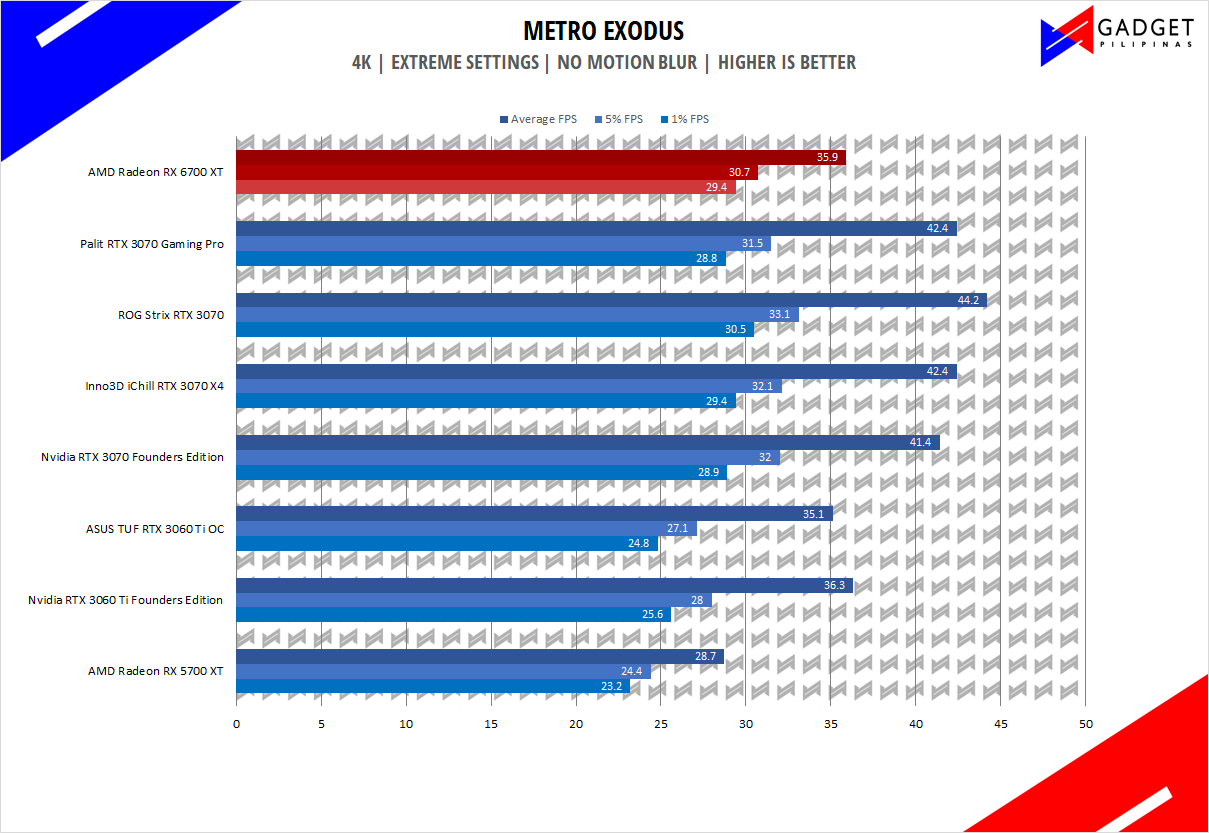 Metro Exodus is the third Metro game trilogy based on Dmitry Glukhovsky’s novels. The game is a first-person shooter with survival horror and stealth elements. The post-apocalyptic game is using 4A Engine by 4A games. Released last 2019, Metro Exodus remains to be one of the most graphically pleasing and demanding games that’s popular to date.
Metro Exodus is the third Metro game trilogy based on Dmitry Glukhovsky’s novels. The game is a first-person shooter with survival horror and stealth elements. The post-apocalyptic game is using 4A Engine by 4A games. Released last 2019, Metro Exodus remains to be one of the most graphically pleasing and demanding games that’s popular to date.
Assassin’s Creed: Odyssey
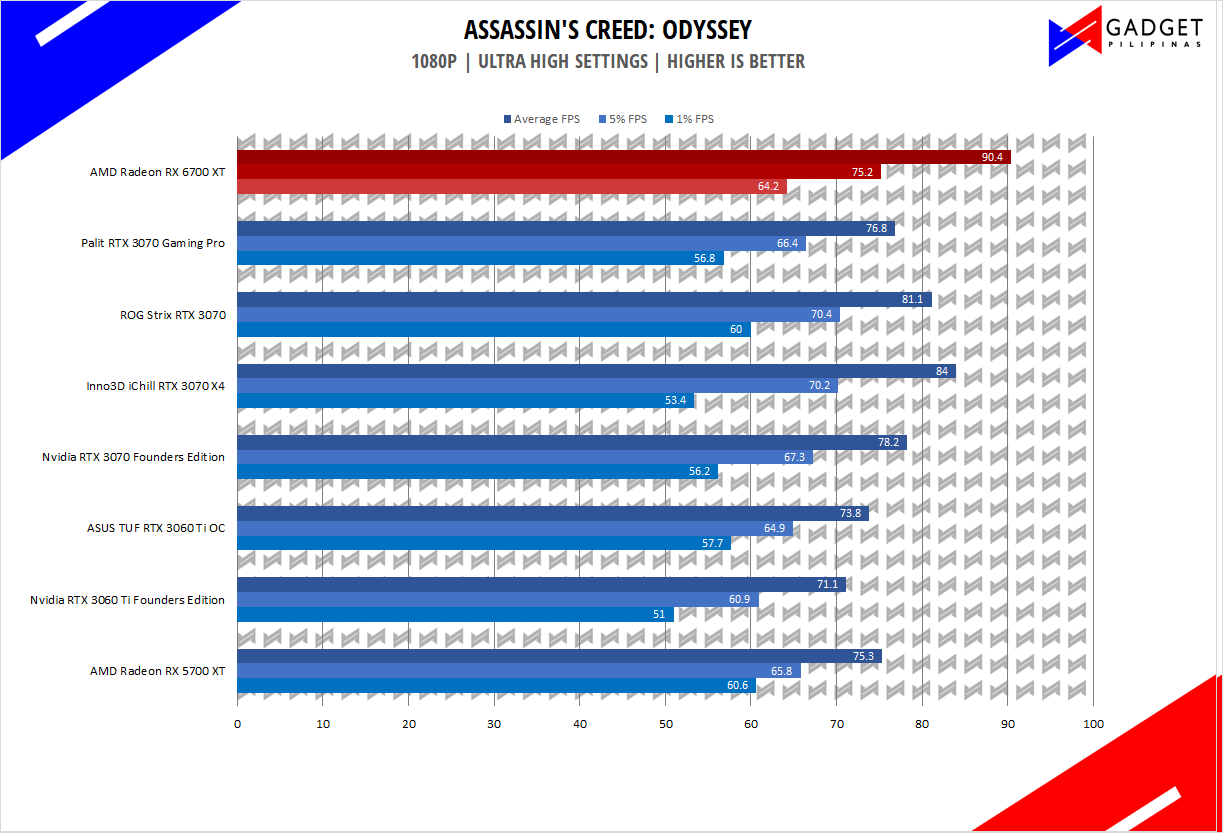
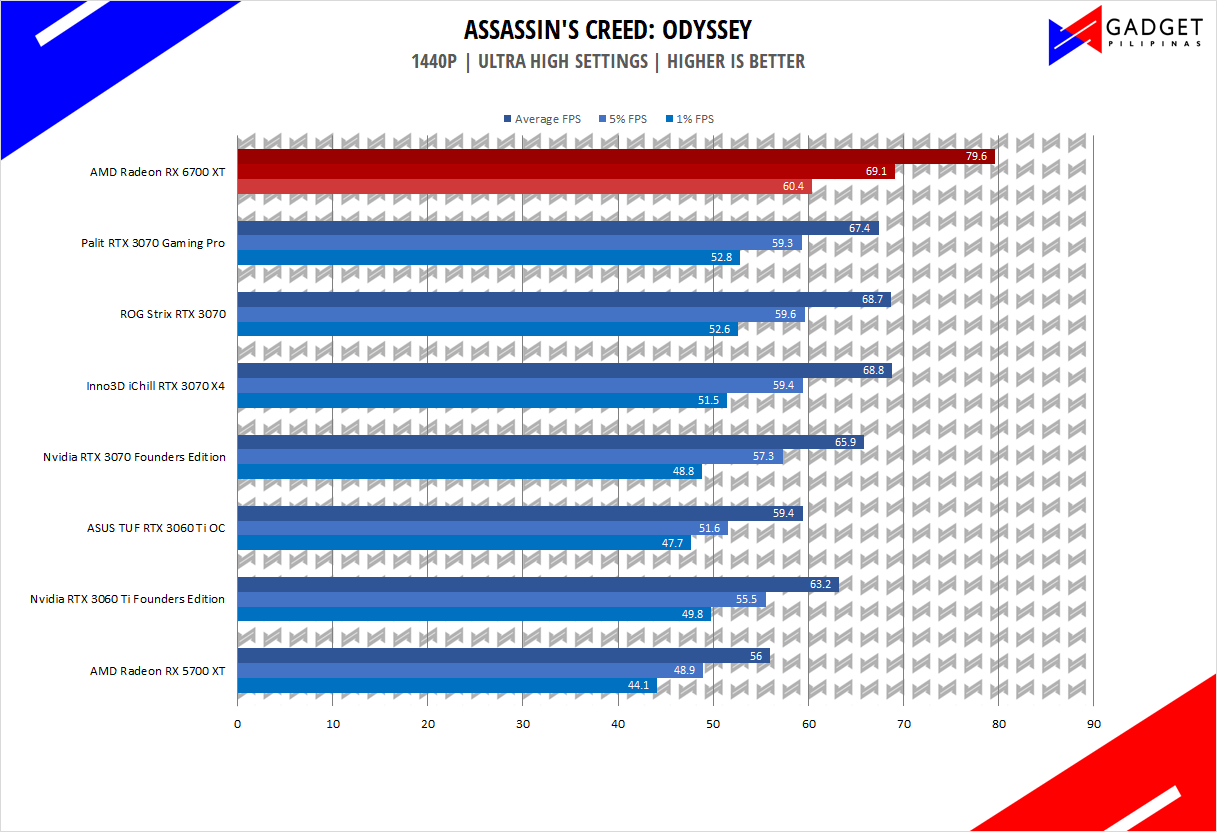
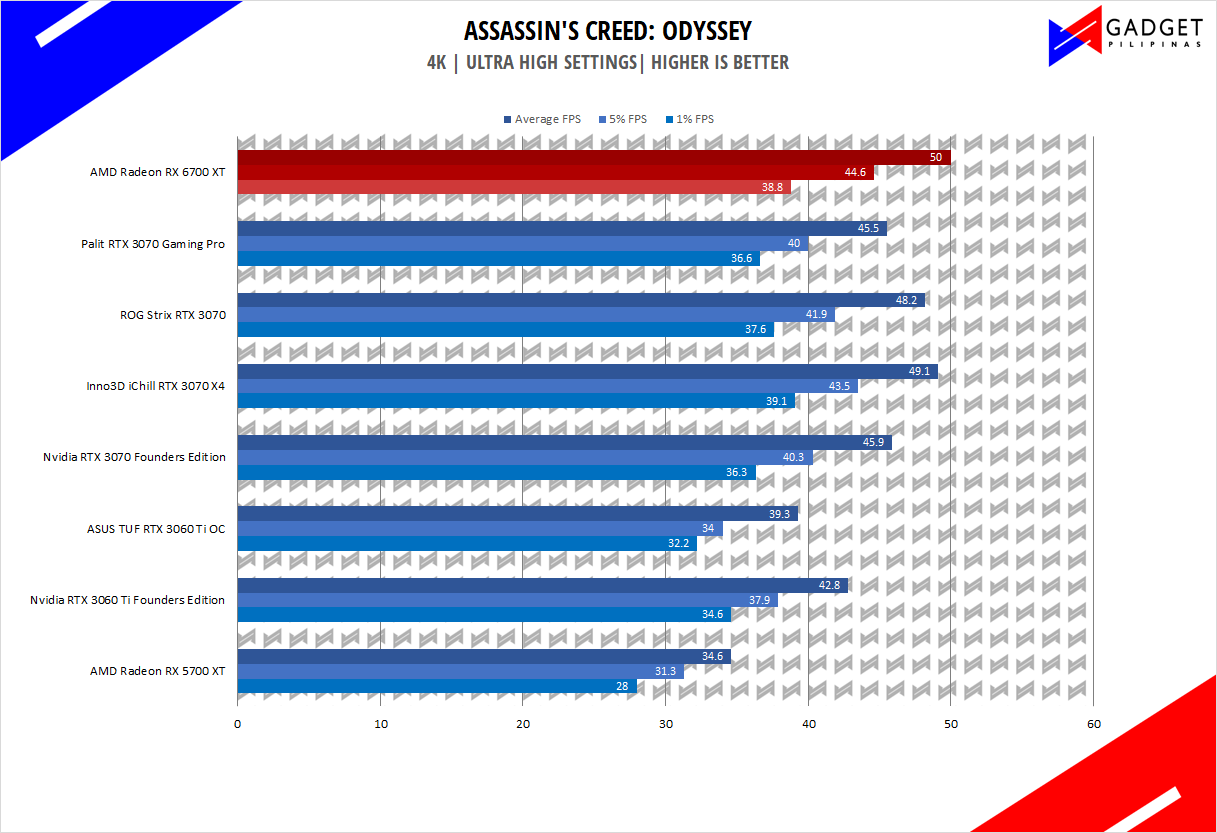 Assassin’s Creed Odyssey is the latest franchise installment from Ubisoft. It’s by far the most popular and stable Assassin’s Creed title since AC IV: Black Flag. It uses the AnvilNext 2.0 game engine, an updated version of Rainbow Six Siege’s game engine, and uses the DirectX 12 API.
Assassin’s Creed Odyssey is the latest franchise installment from Ubisoft. It’s by far the most popular and stable Assassin’s Creed title since AC IV: Black Flag. It uses the AnvilNext 2.0 game engine, an updated version of Rainbow Six Siege’s game engine, and uses the DirectX 12 API.
F1 2020
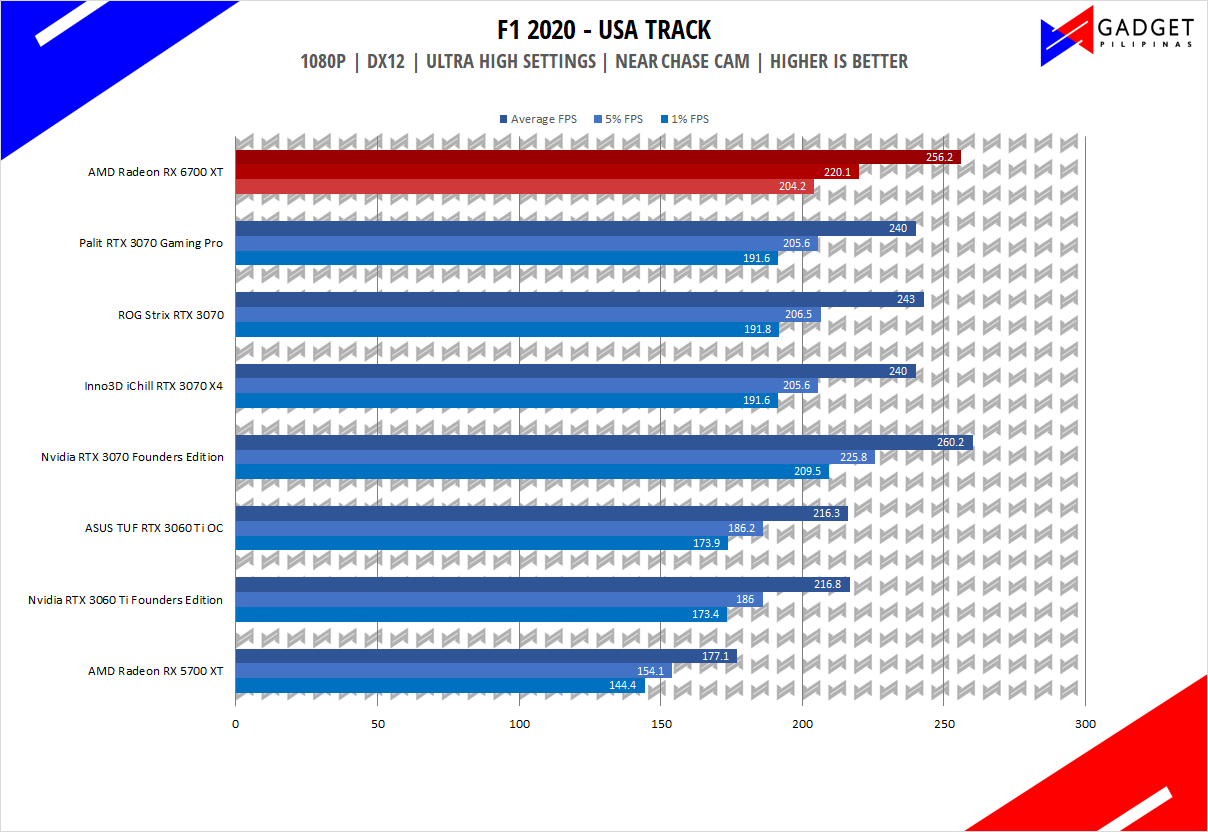
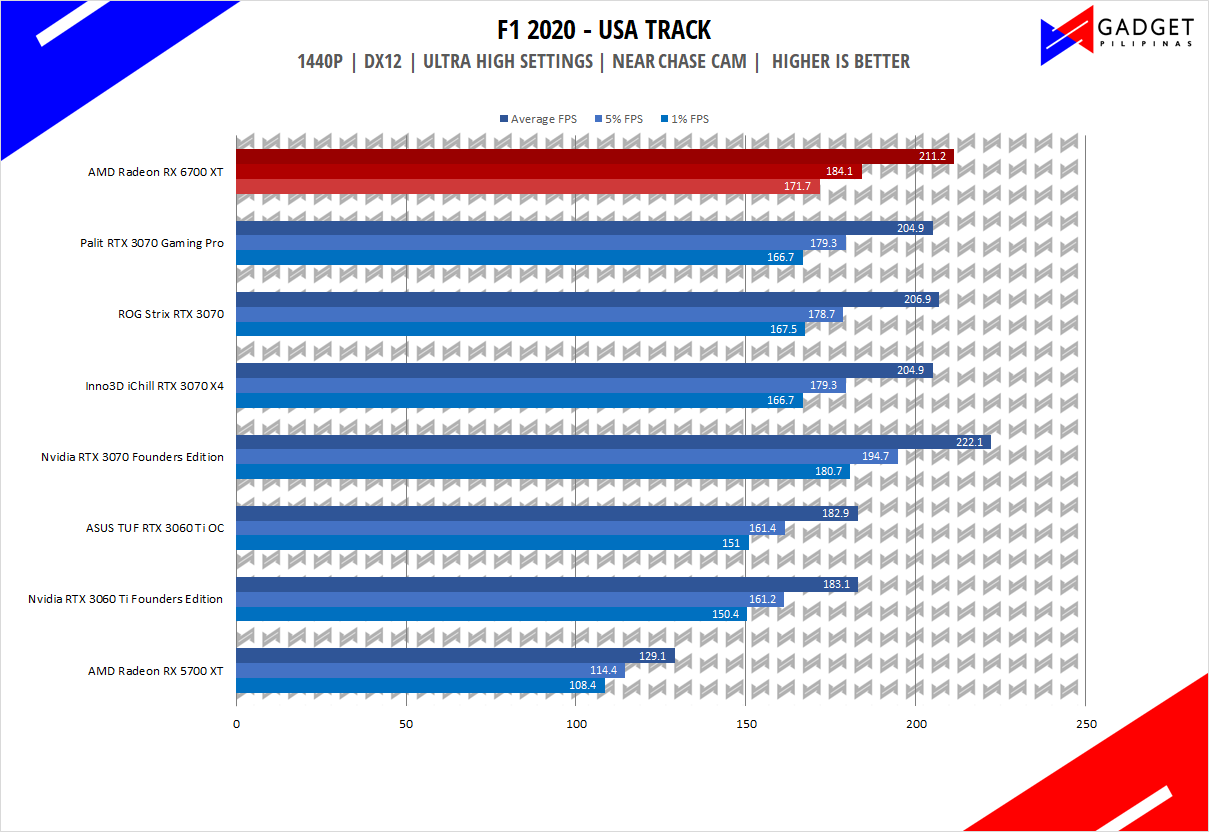
 F1 2020 is the official video game of the 2020 Formula 1 and Formula 2 championships developed by Codemasters. F1 2020 is the twelfth installment in the franchise and uses the Ego Engine 3.0. F1 2020 is a good representation of racing games thanks to its realistic graphics and fairly demanding spec requirements.
F1 2020 is the official video game of the 2020 Formula 1 and Formula 2 championships developed by Codemasters. F1 2020 is the twelfth installment in the franchise and uses the Ego Engine 3.0. F1 2020 is a good representation of racing games thanks to its realistic graphics and fairly demanding spec requirements.
GOD FALL
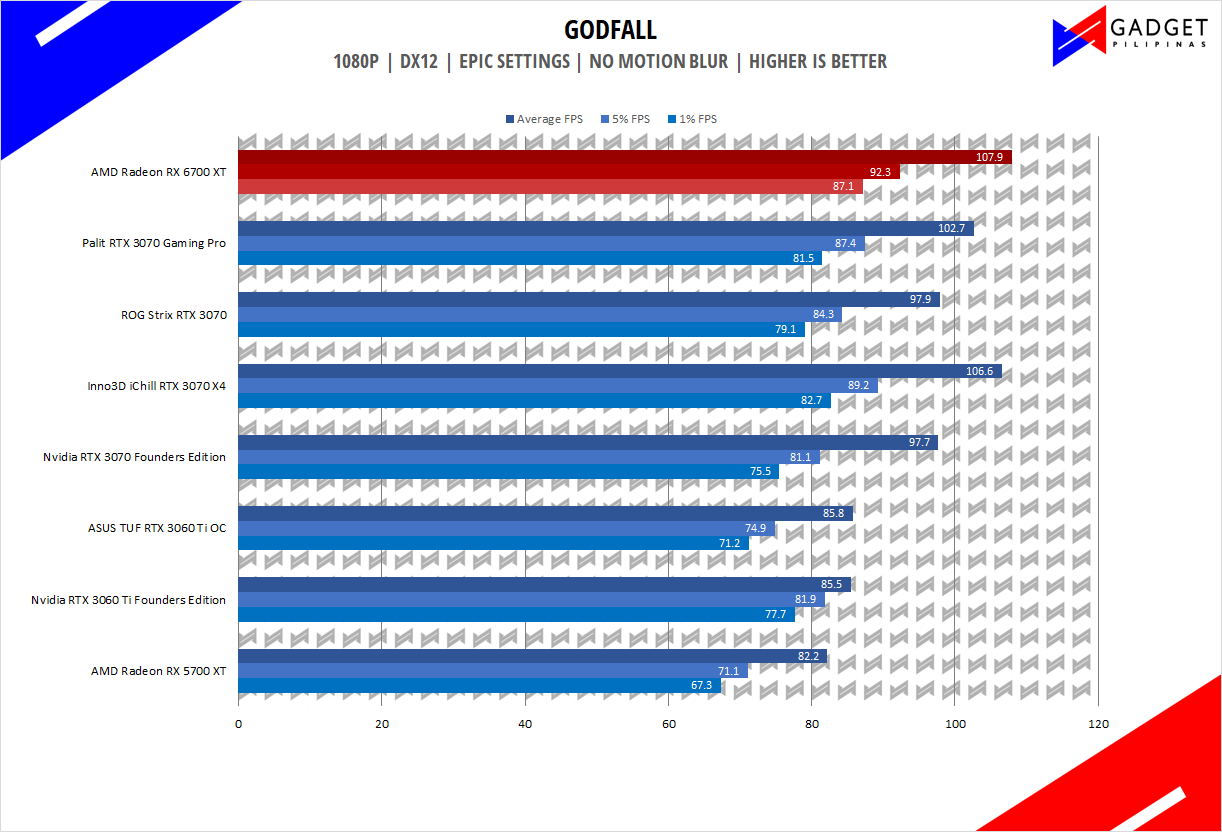

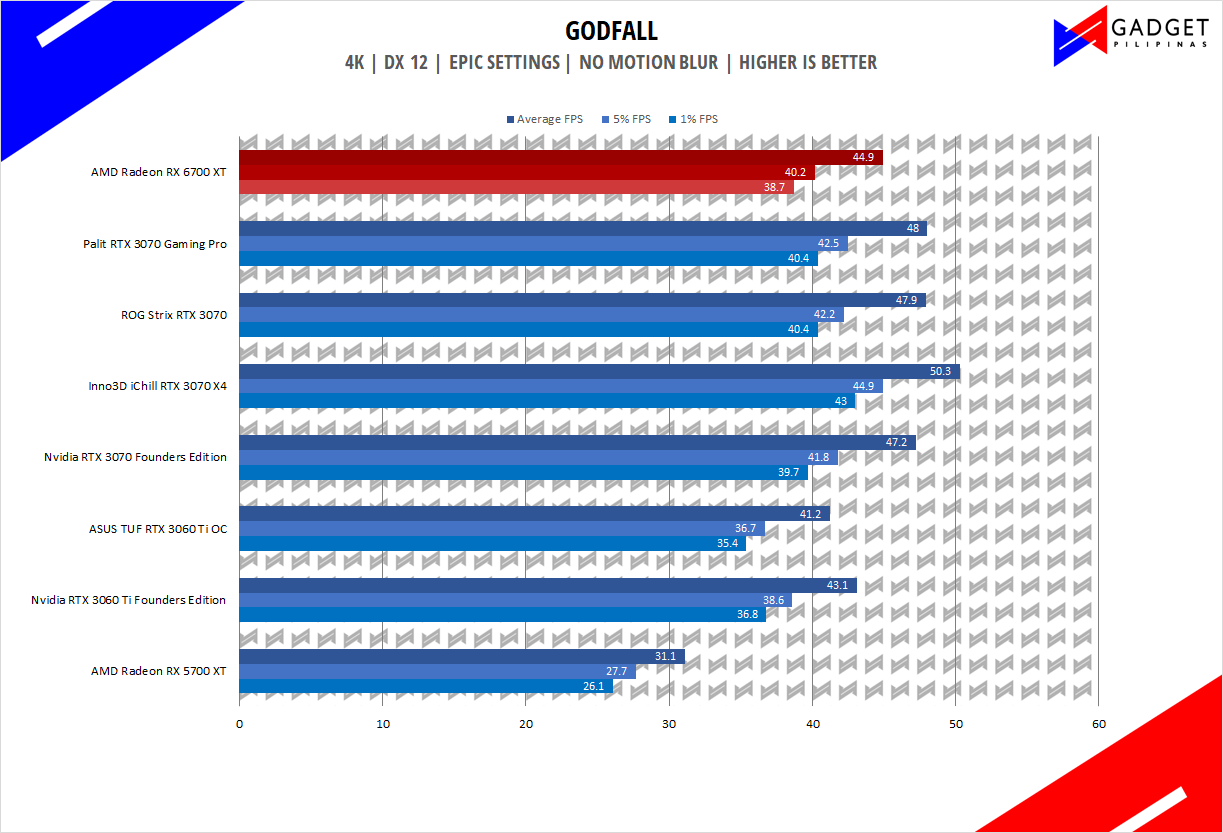 Godfall’s resolution performance scaling is impressive considering this is launch performance numbers. Counterplay Games plans to release a ray tracing setting for Godfall but will only be limited to AMD at launch. We plan to revisit Godfall once Ray Tracing is available on Nvidia for a fair comparison against the RX 6800 XT.
Godfall’s resolution performance scaling is impressive considering this is launch performance numbers. Counterplay Games plans to release a ray tracing setting for Godfall but will only be limited to AMD at launch. We plan to revisit Godfall once Ray Tracing is available on Nvidia for a fair comparison against the RX 6800 XT.
Performance Summary
It’s impressive to see the Radeon RX 6700 XT being able to keep up with both the Nvidia RTX 3070 and RTX 3060 Ti, third-party variants included. However, the RX 6700 XT wins in some benchmarks at an average of 8 FPS. And when it losses, it’s at an average of 15 FPS. Overall, Radeon RX 6700 XT manages to catch up or sometimes overtake team green at higher resolutions thanks to its 12GB GDDR6 memory.
AMD Radeon RX 6700XT Temps and Power Draw
Our Radeon RX 6700 XT review unit manage to only draw a peak of 188-watts during our benchmark run. Compared to an absolute of 200-watts on the RTX 3060 Ti and an average of 250-watts for the RTX 3070s, the RX 6700 XT delivers an outstanding performance-pet-watt ratio especially considering that it uses one 8pin and one 6pin PCI-E power cables. Third-party designs may be able to breach its 230W TBP and with it, higher frame rates.
As much as we’d like to praise AMD for its impressive performance-per-watt numbers, we are extremely disappointed with the temperatures of the reference RX 6700 XT. We can get past the idle temp of 38°c since the RX 6700XT has a 0db fan mode, but a peak temp of 89°c is definitely an issue.
Conclusion
Indeed the AMD Radeon RX 6700 XT is a worthy opponent against the Nvidia GeForce RTX 3070 and RTX 3060 Ti as it is able to trade blows, especially in higher resolutions. However, much like its RTX 6800 XT bigger brother, the RX 6700 XT falls short when it comes to ray-traced titles, not to mention the “big gap” when DLSS is taken into account. It’s not to say that the Radeon RX 6700 XT is a bad GPU, it just carries the same compromises of its bigger brother with the key difference being the RX 6700 XT’s performance is much closer, if not, on par with its team green counterpart. That said, its performance numbers, not to mention its power consumption make it a valuable alternative especially considering today’s supply problems.
Overall, the RX 6700 XT doesn’t take the 1440p crown per se but it still gives Nvidia a run for its money thanks to its superb raw performance and power efficiency. Just make no mistake in getting a reference cooler to avoid the toasty 90°c level.
Grant is a Financial Management graduate from UST. His passion for gadgets and tech crossed him over in the industry where he could apply his knowledge as an enthusiast and in-depth analytic skills as a Finance Major. His passion allows him to earn at the same time help Gadget Pilipinas' readers in making smart, value-based decisions and purchases with his reviews and guides.

